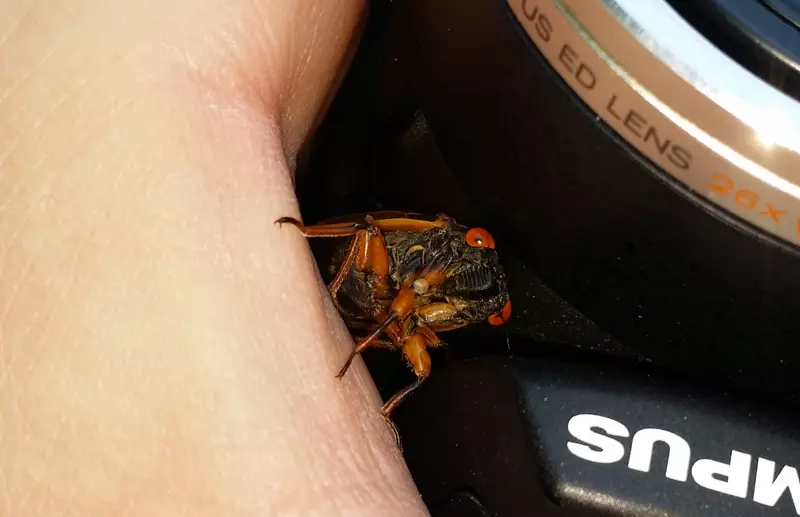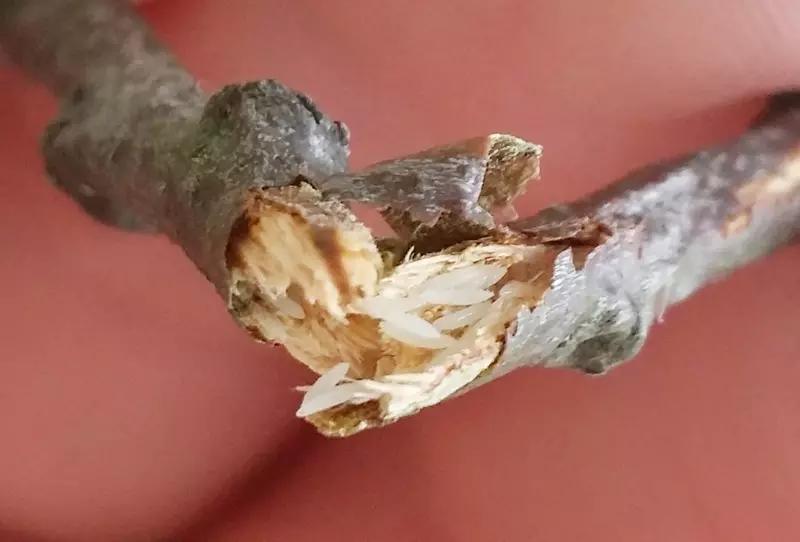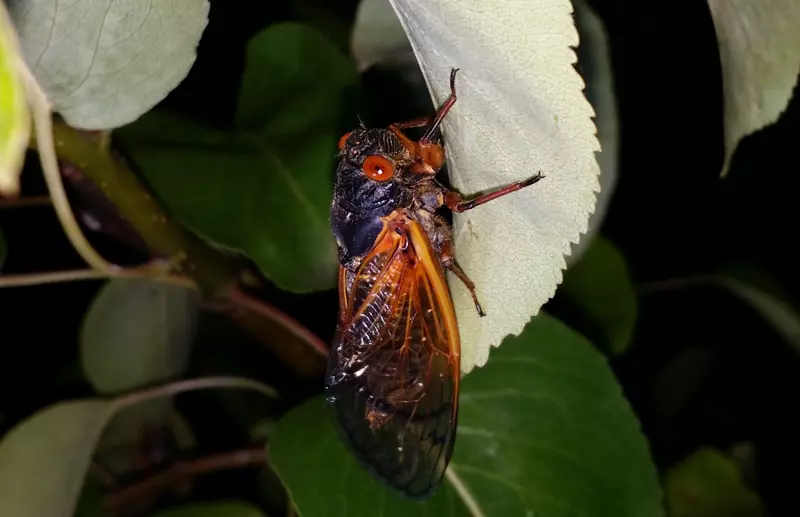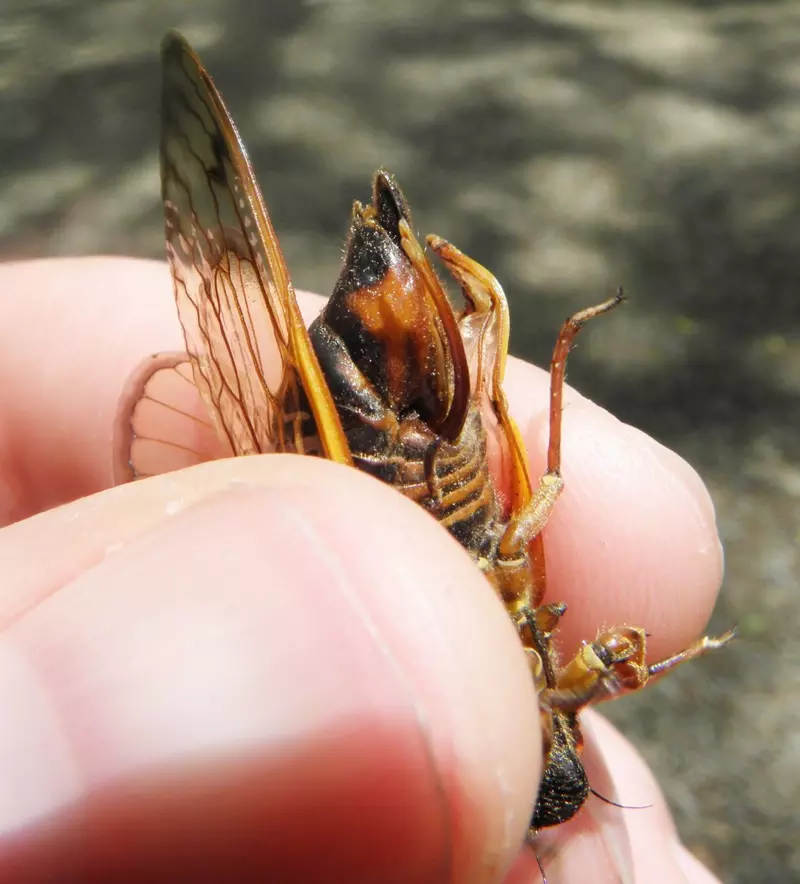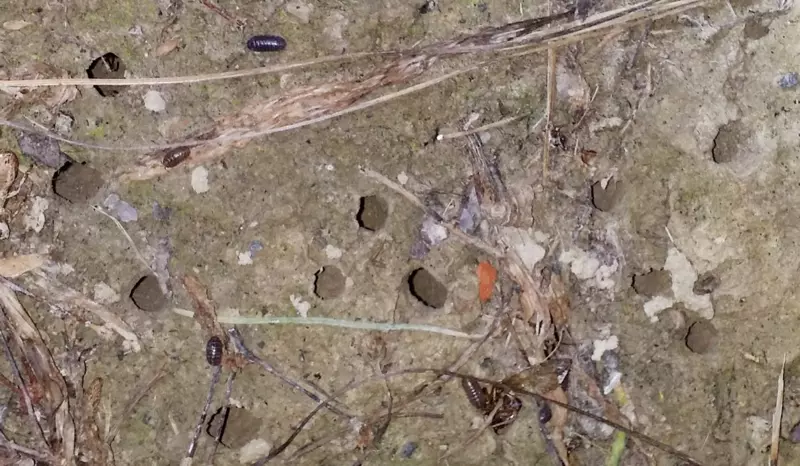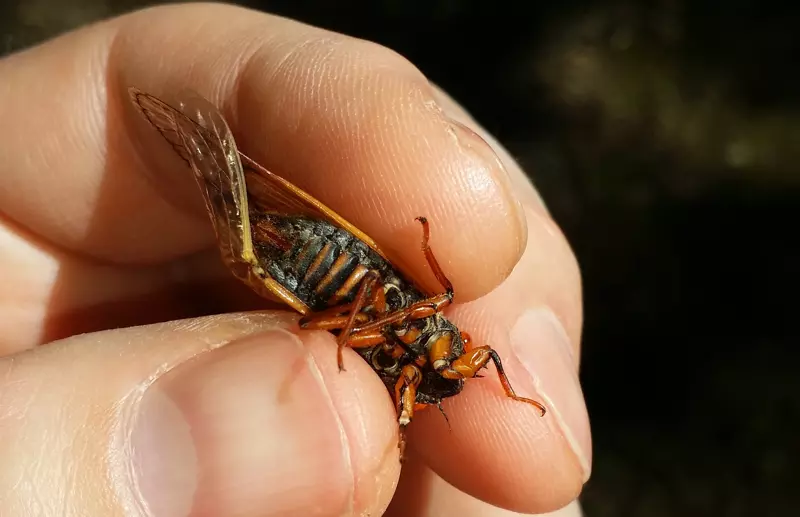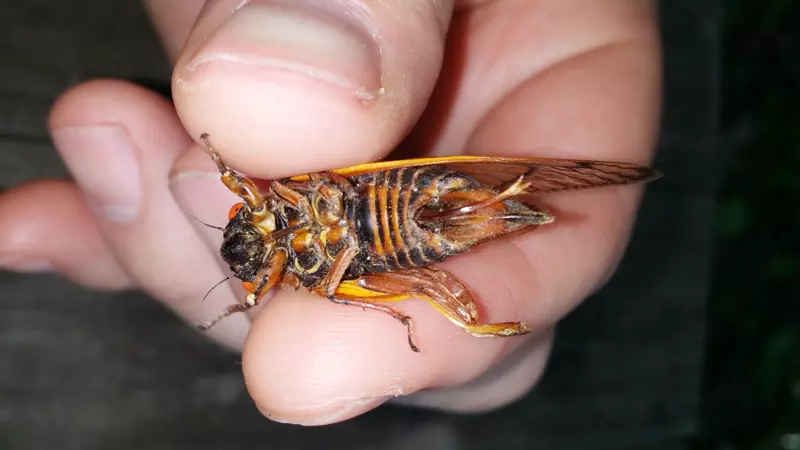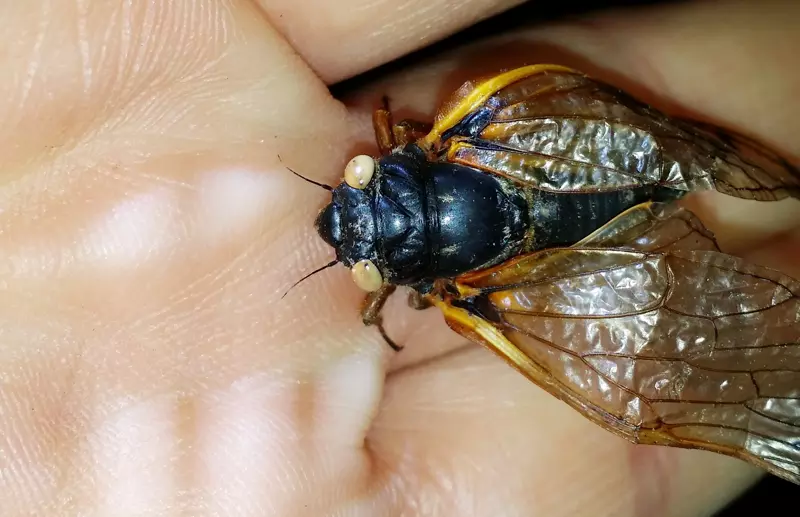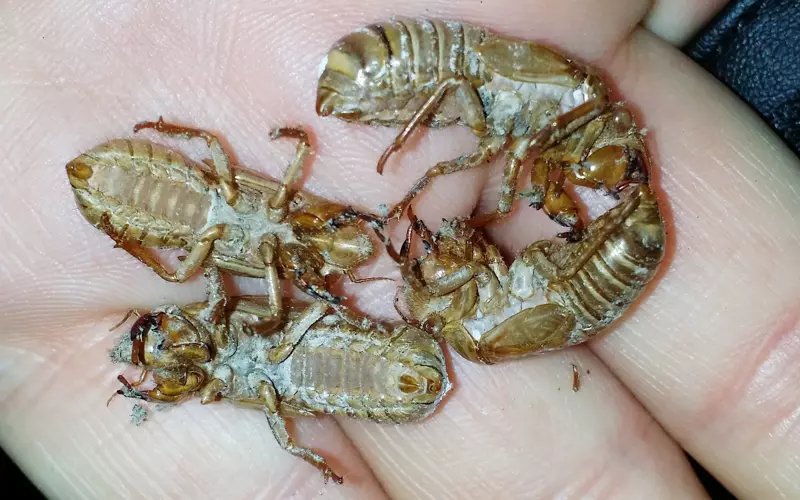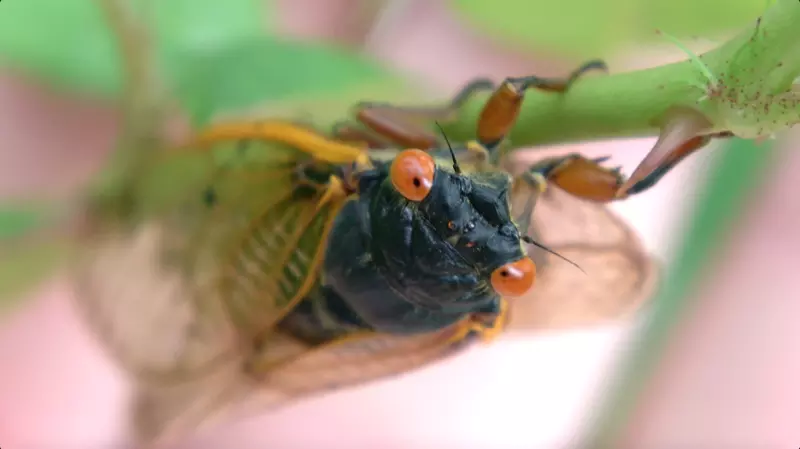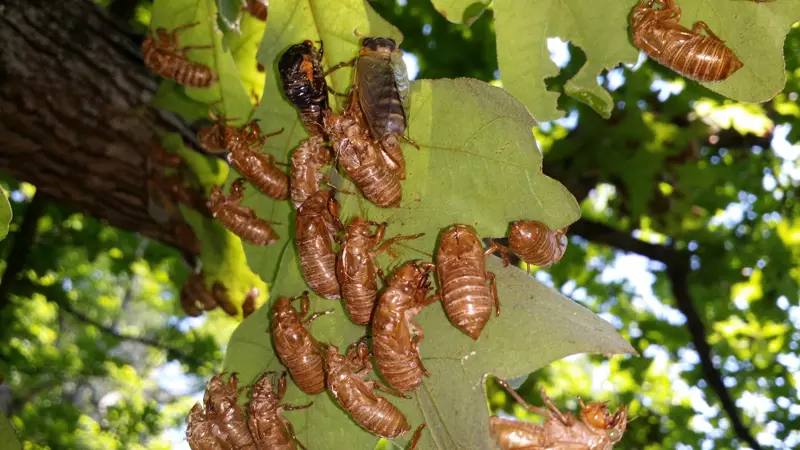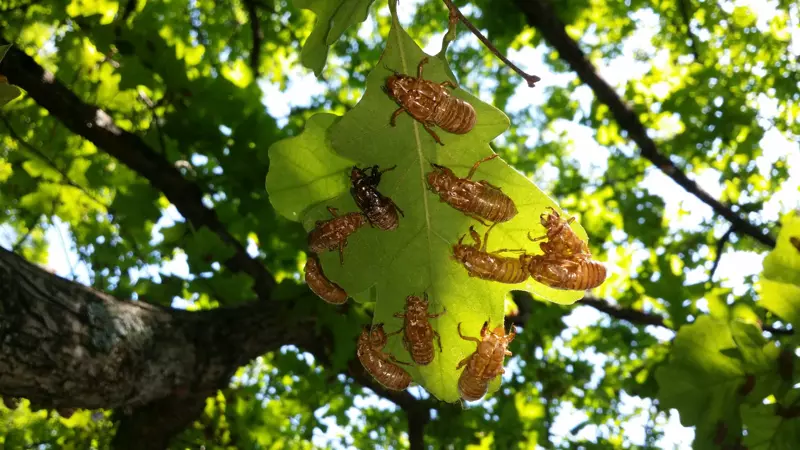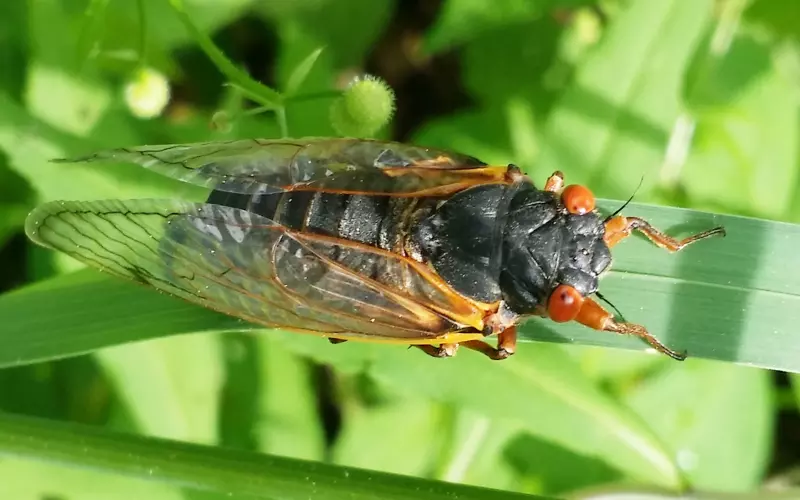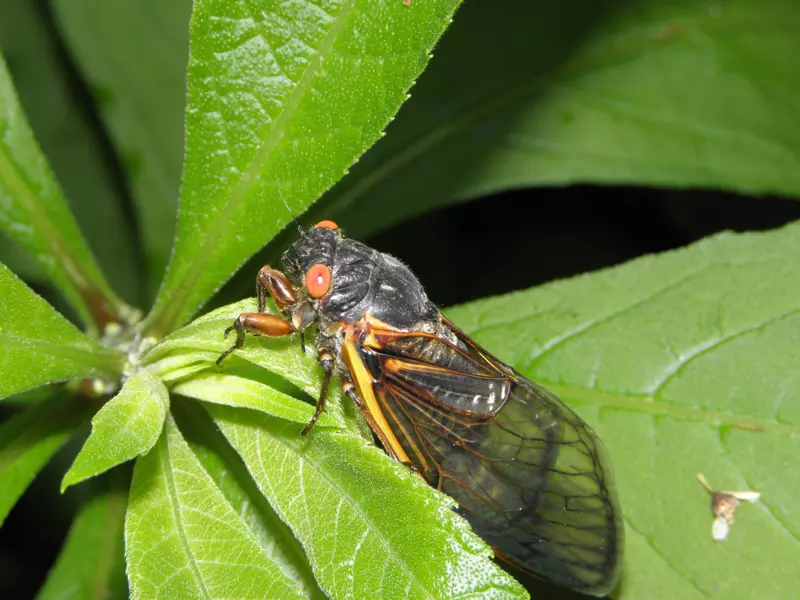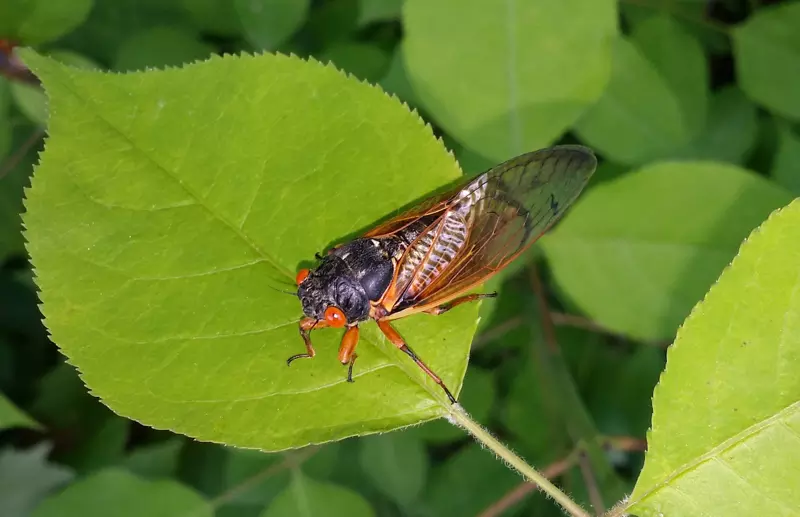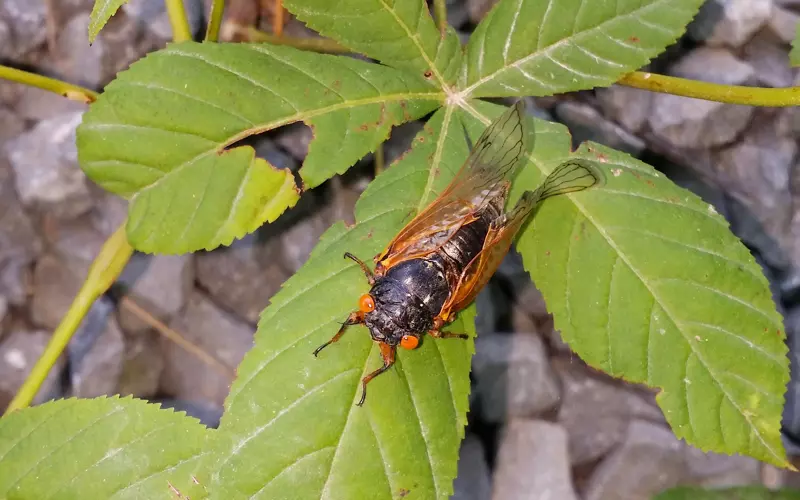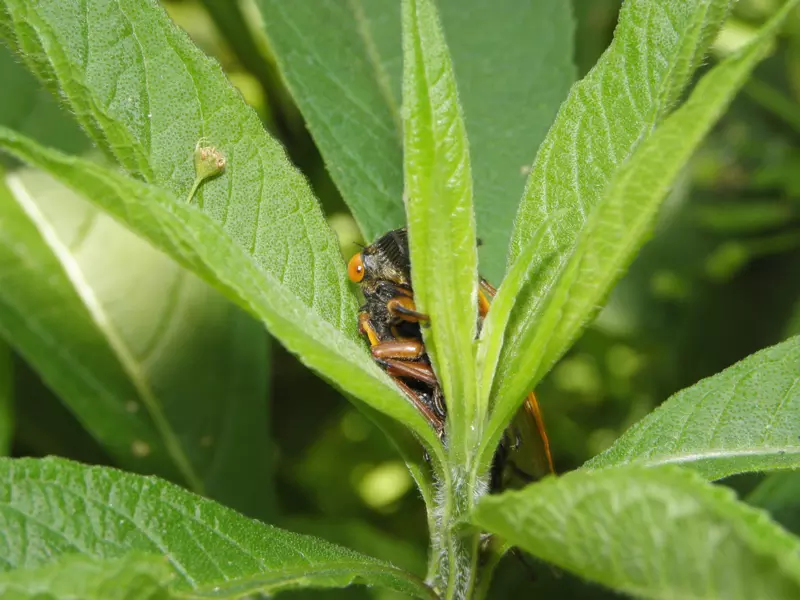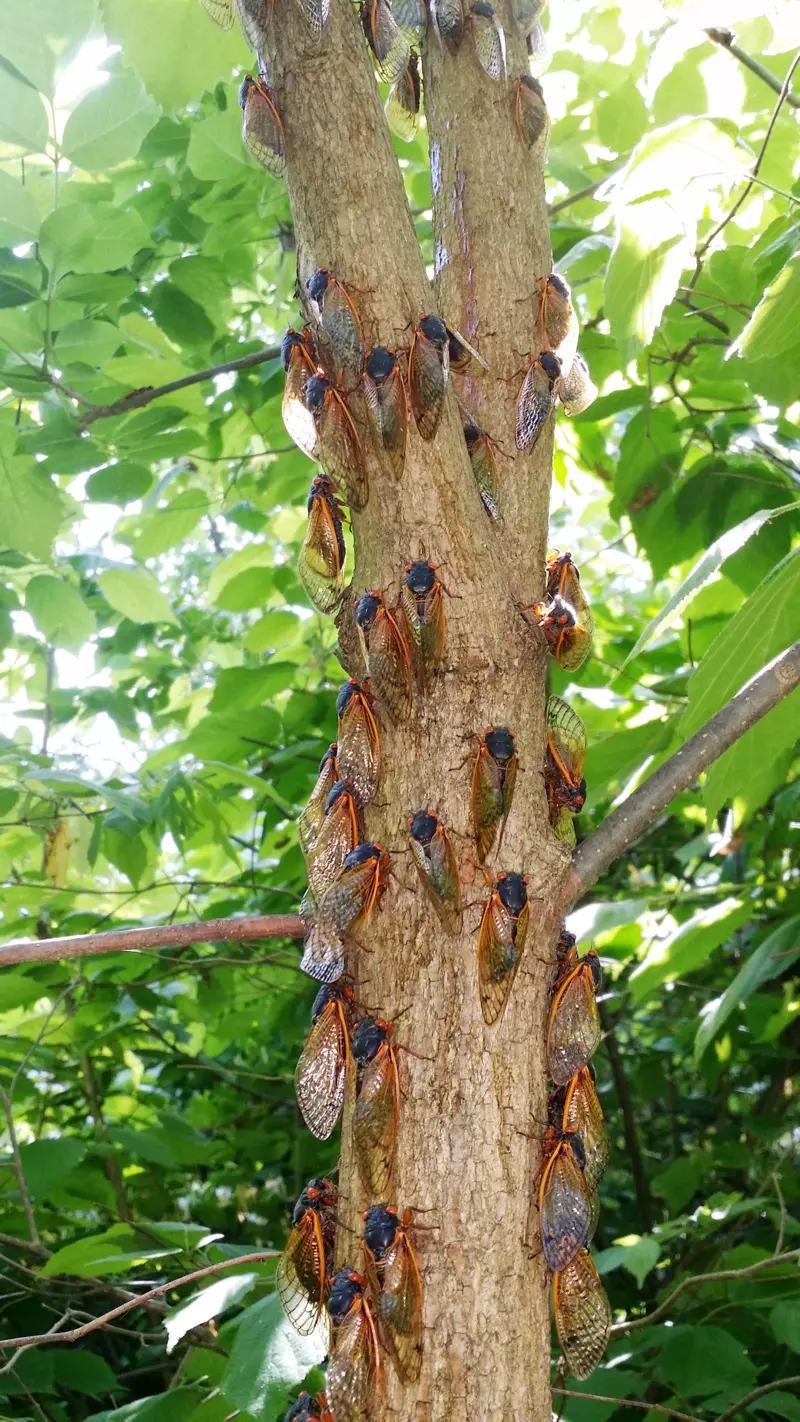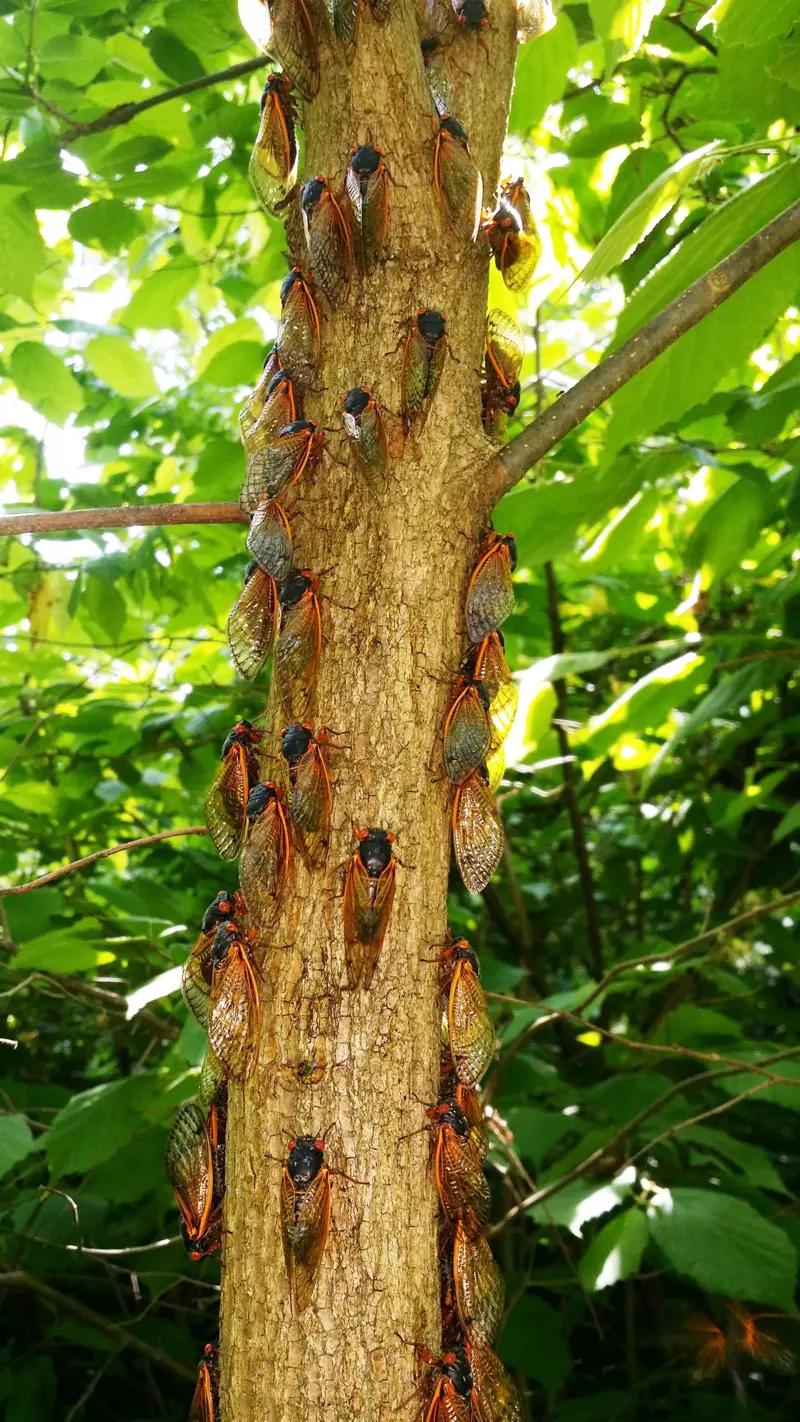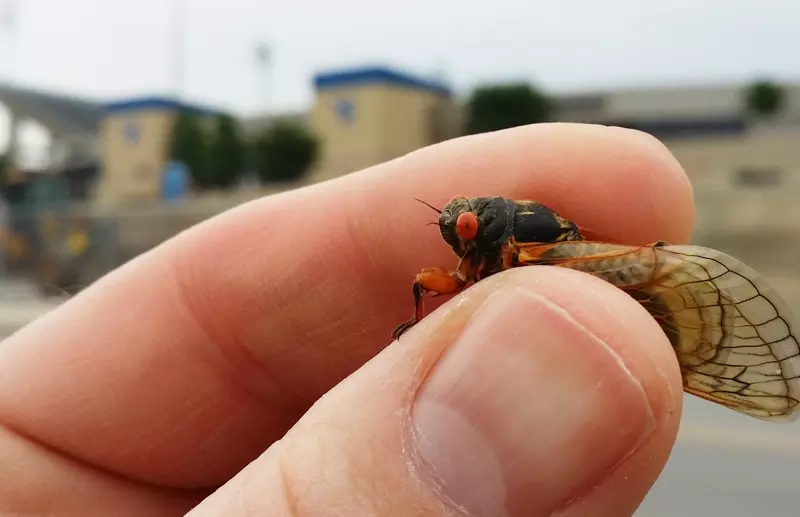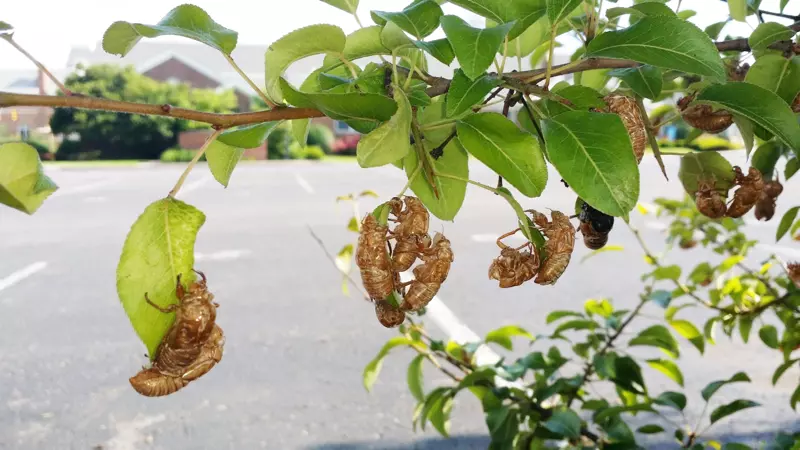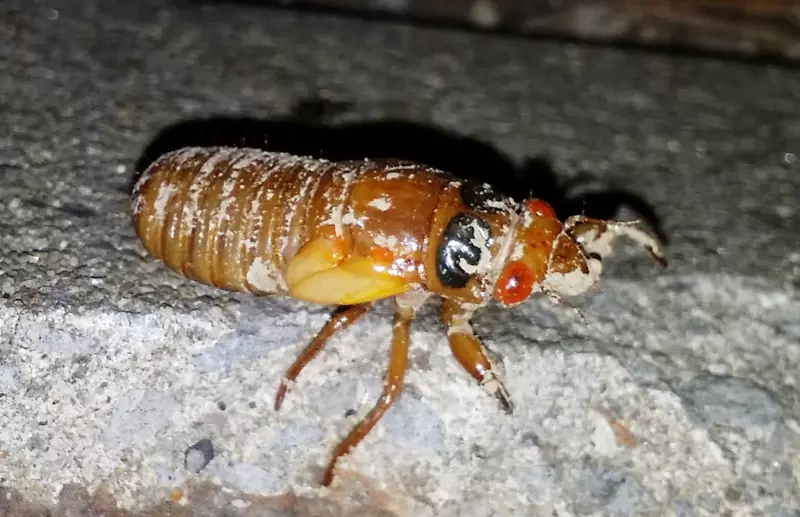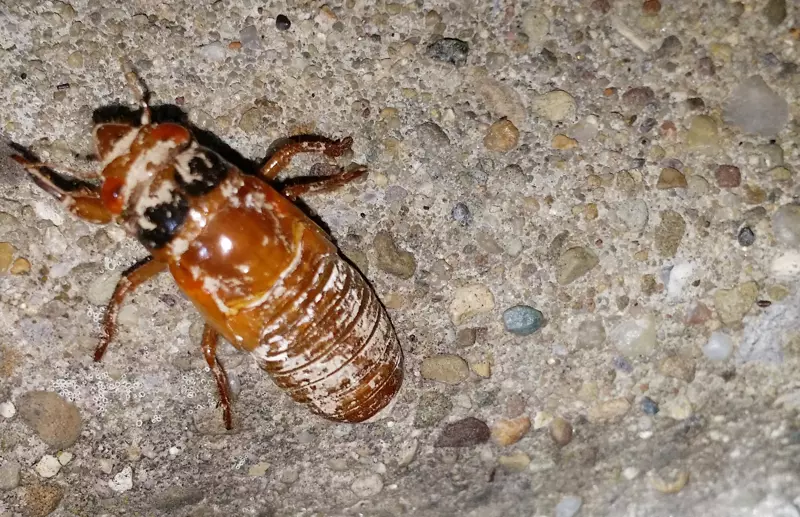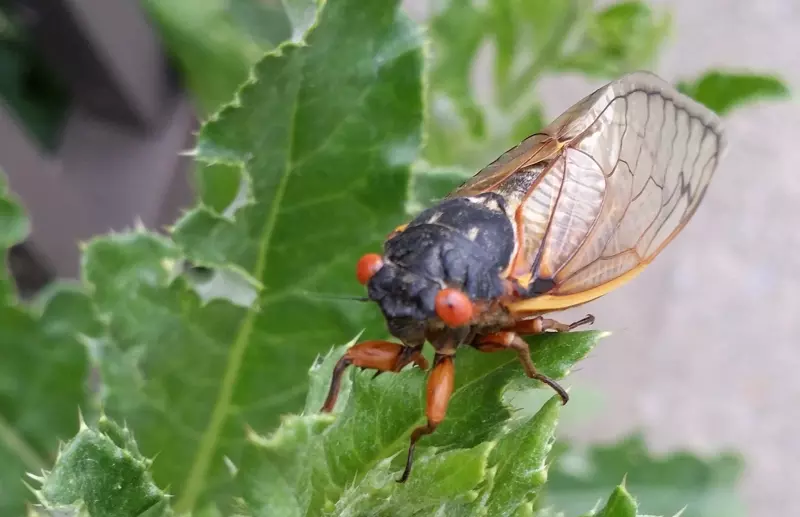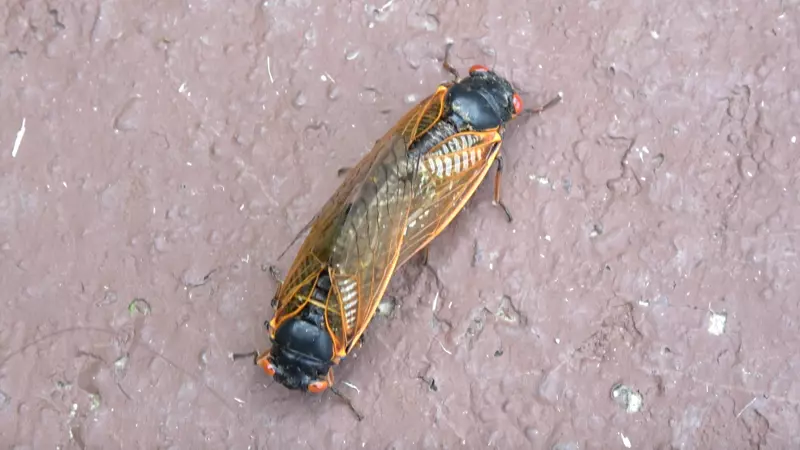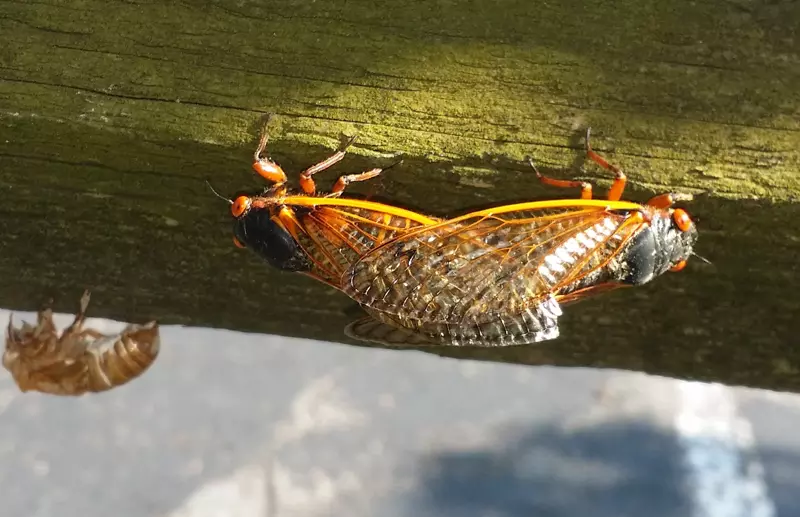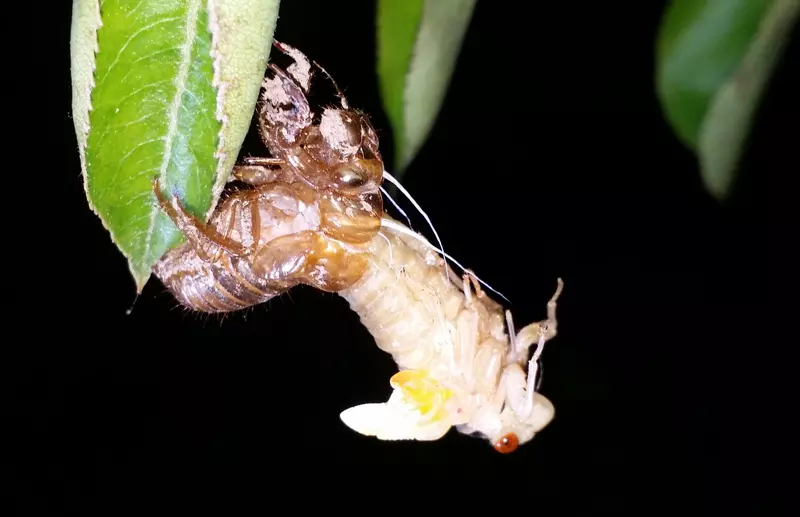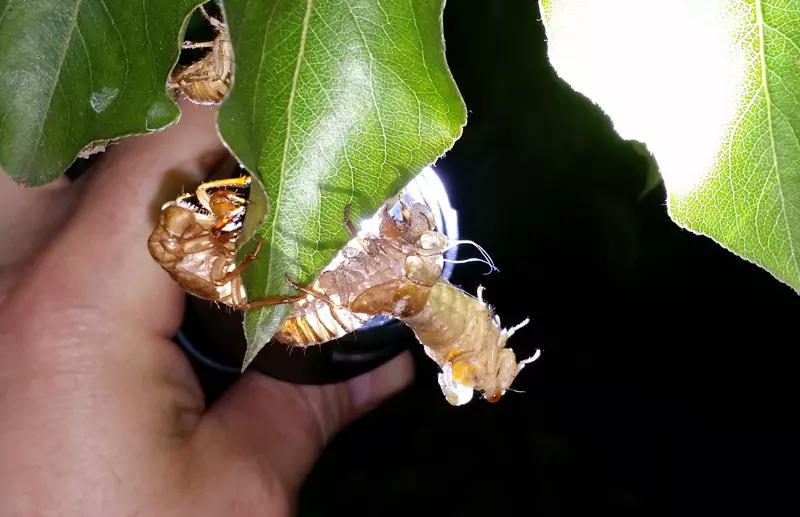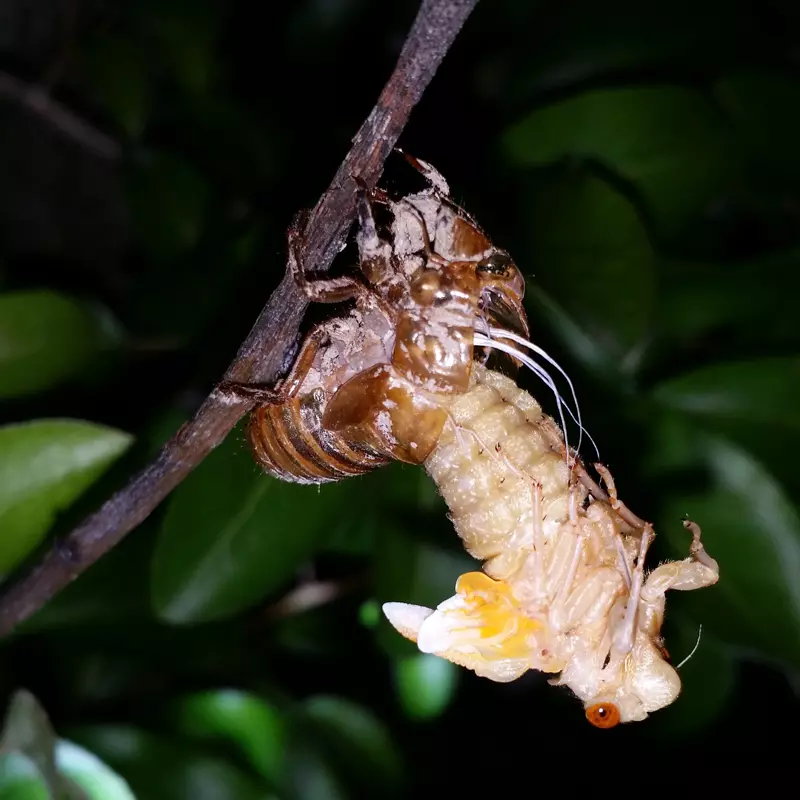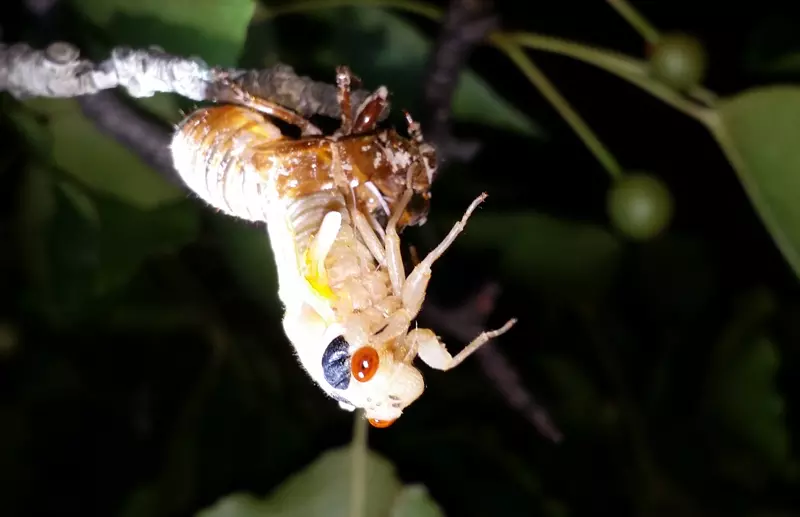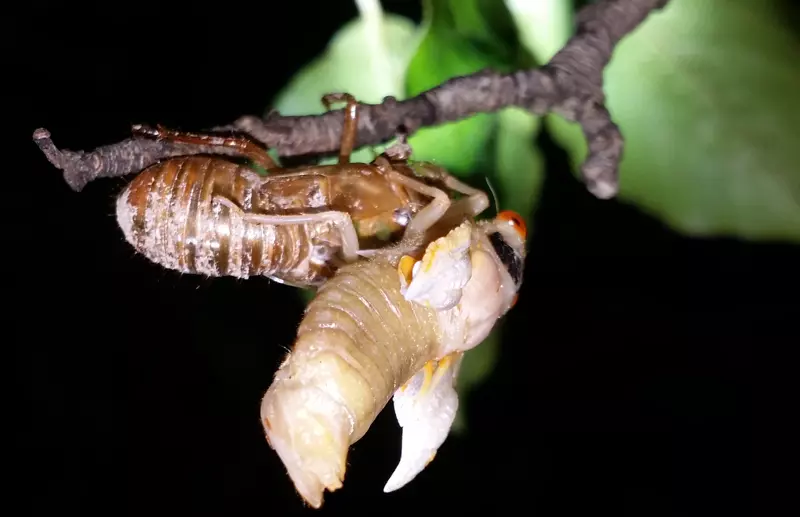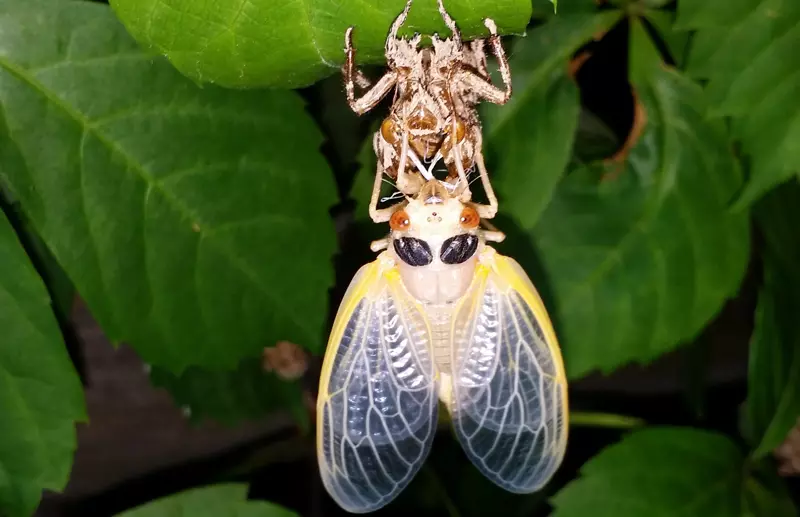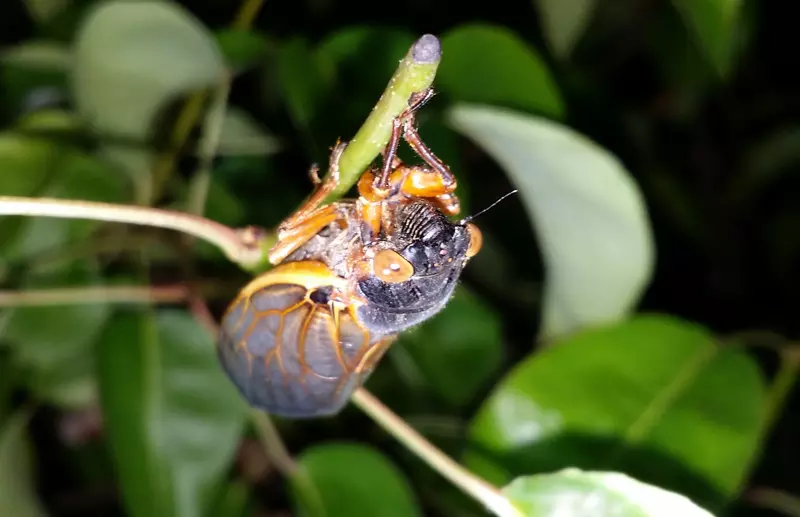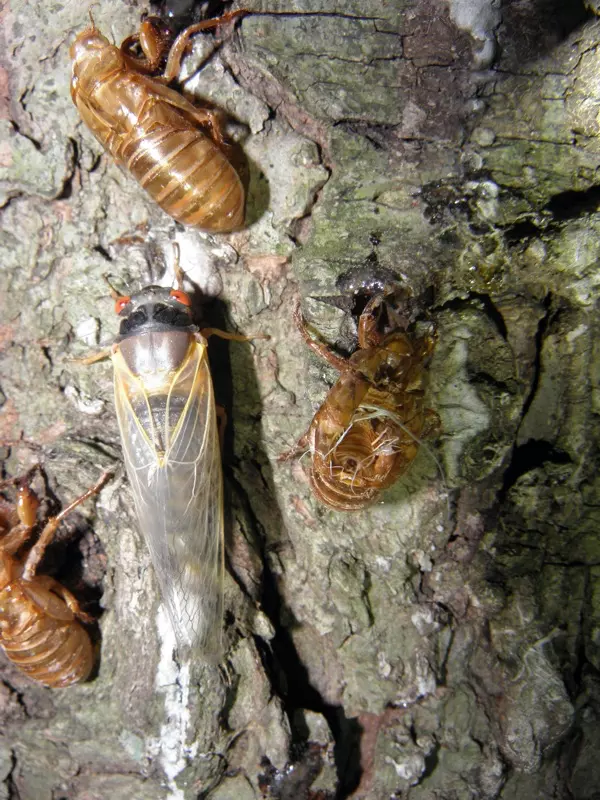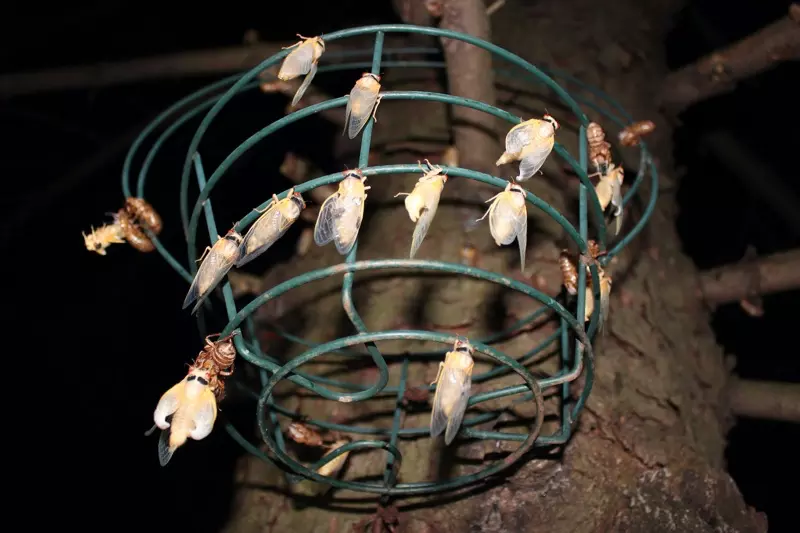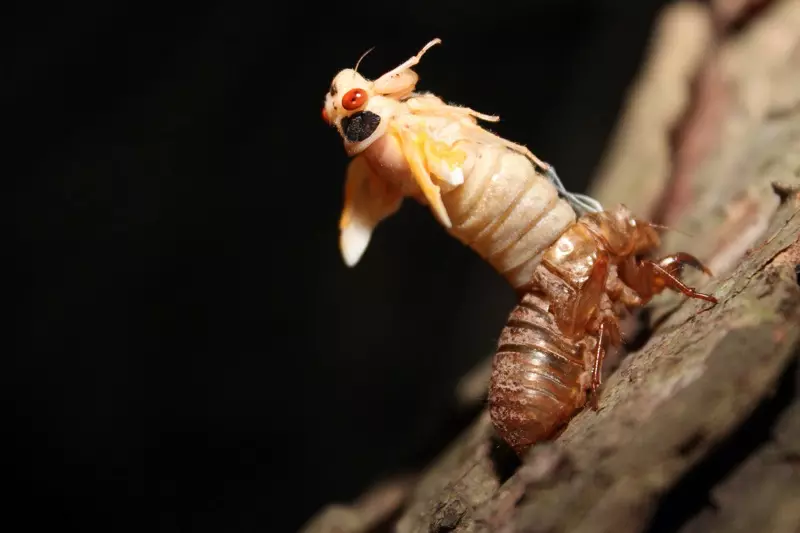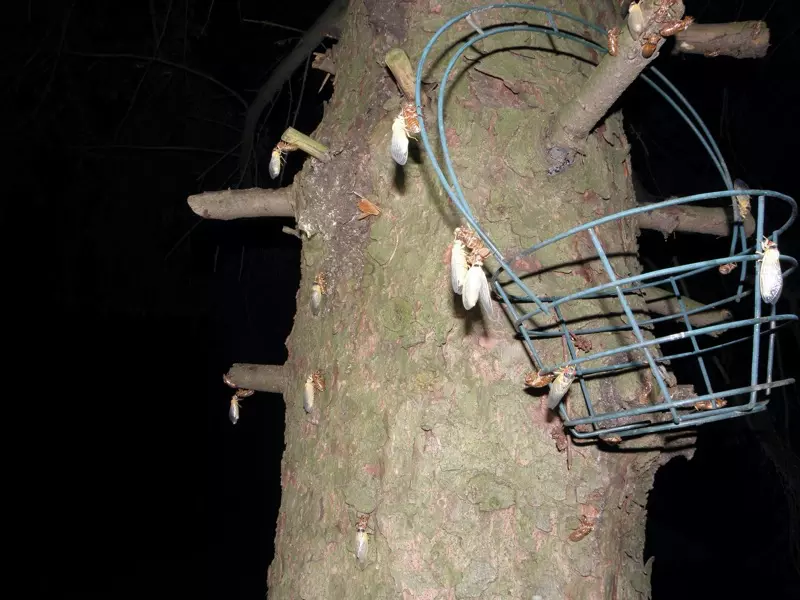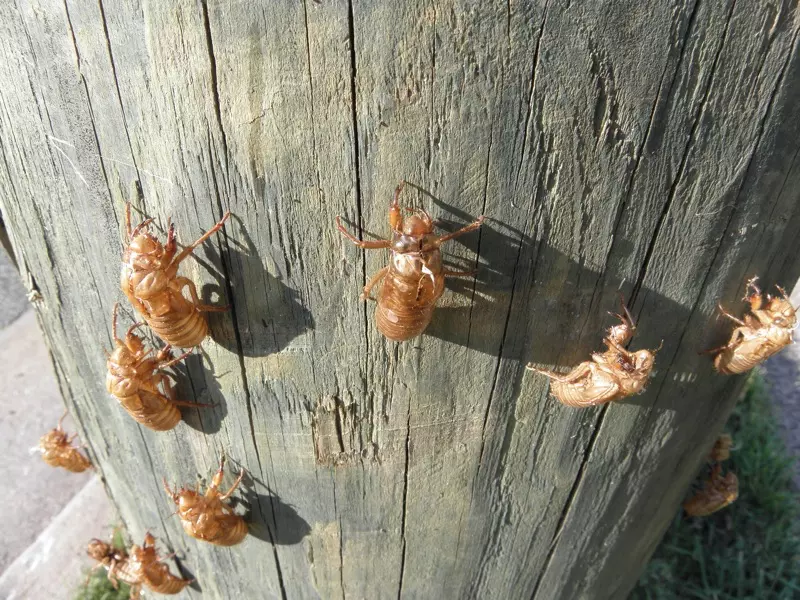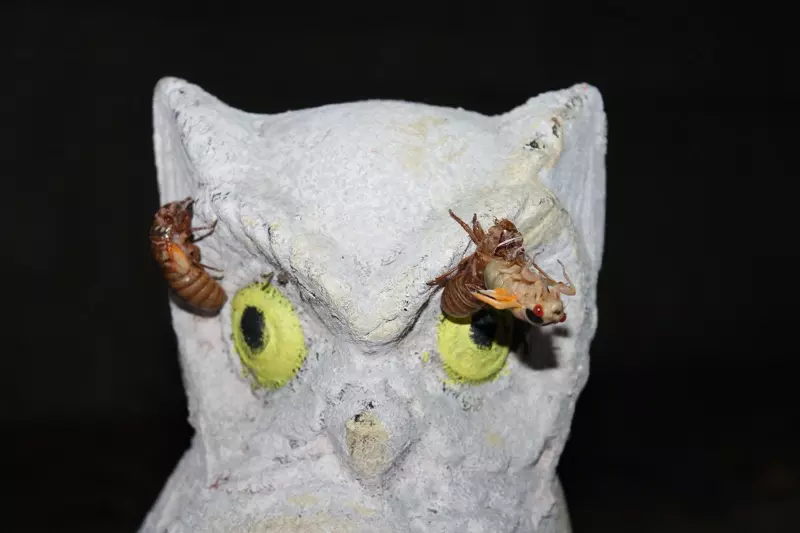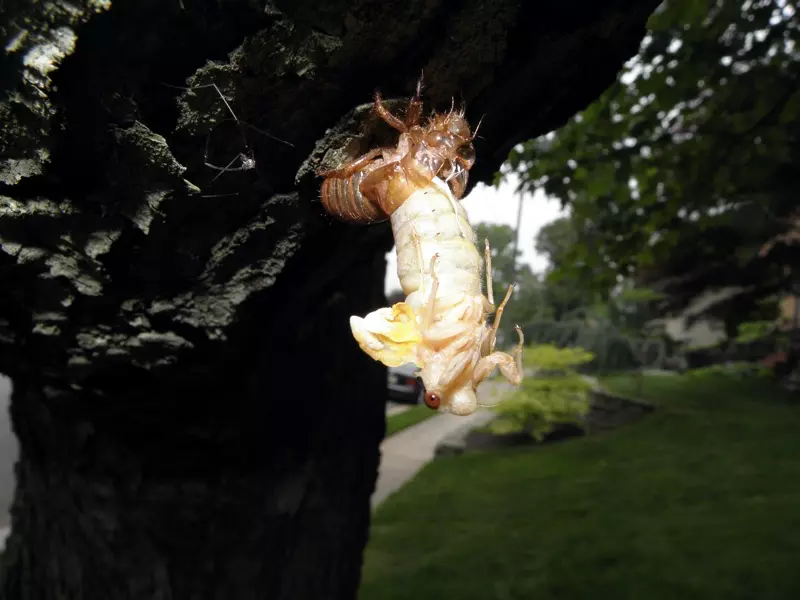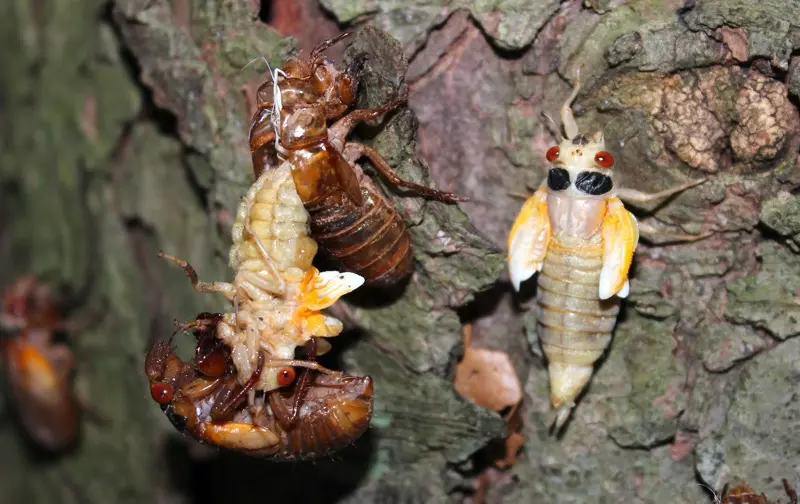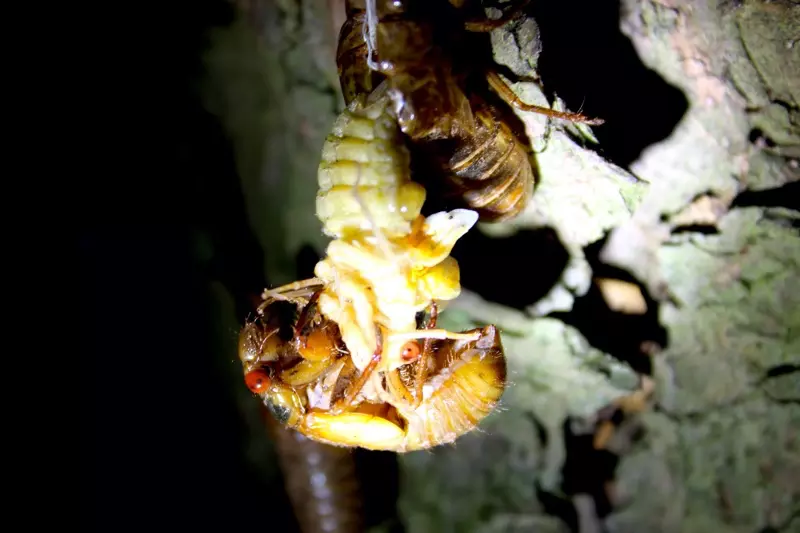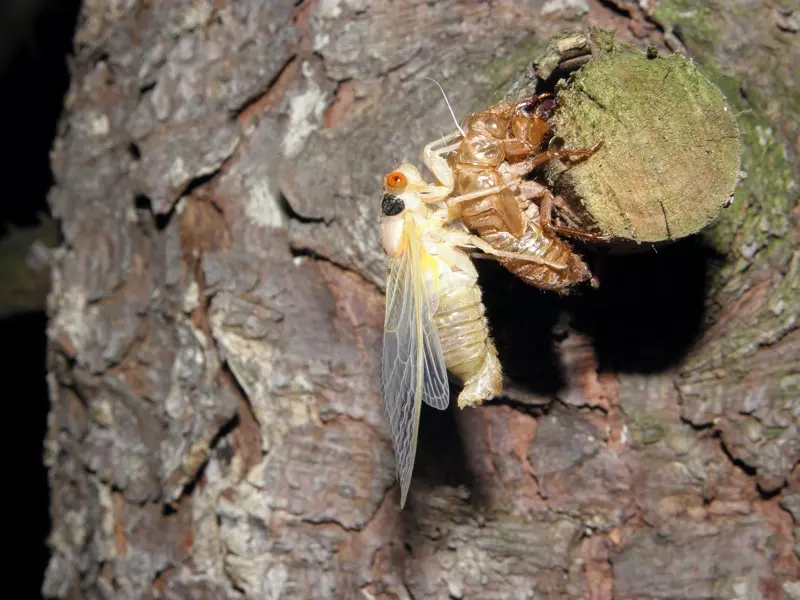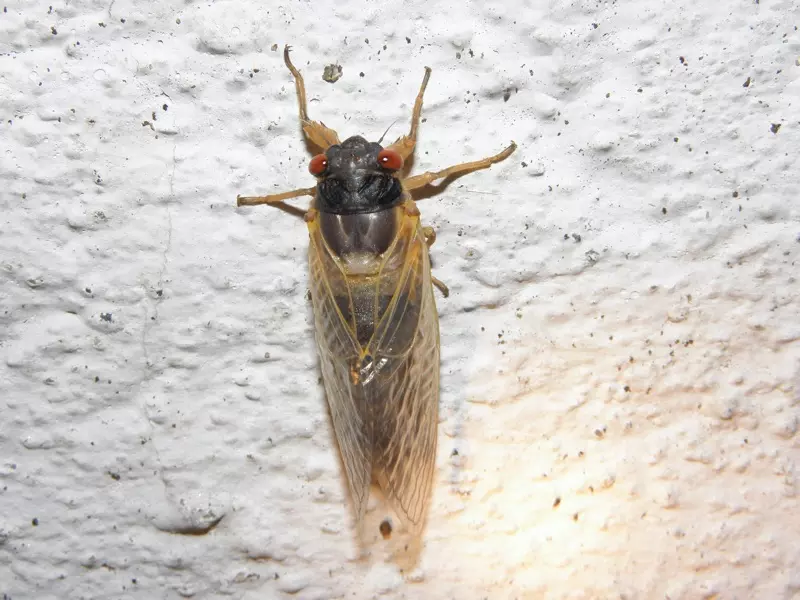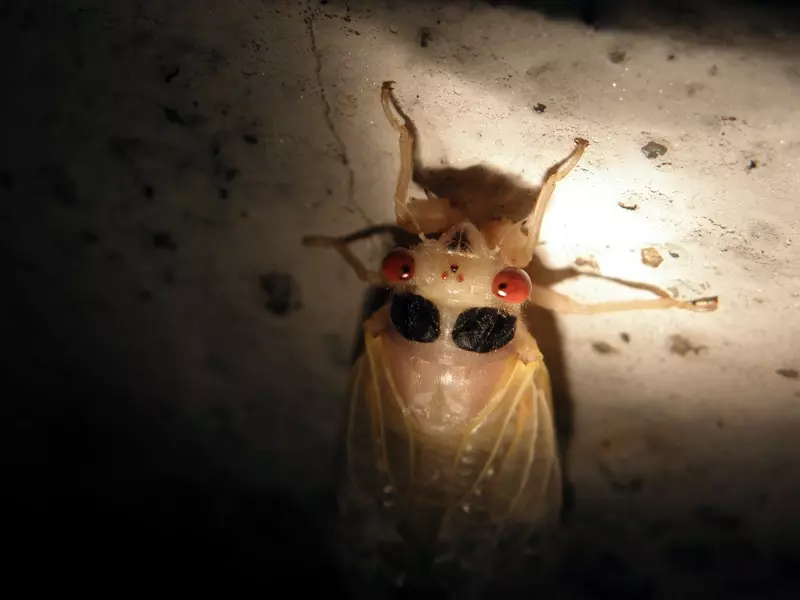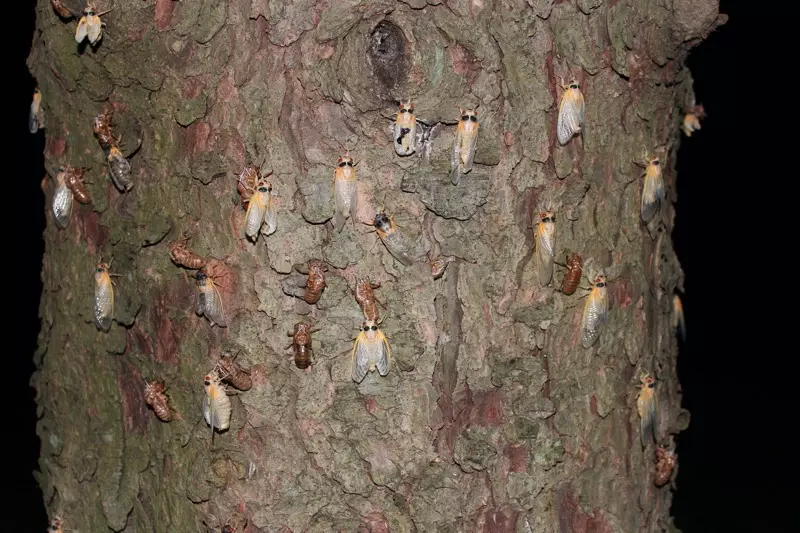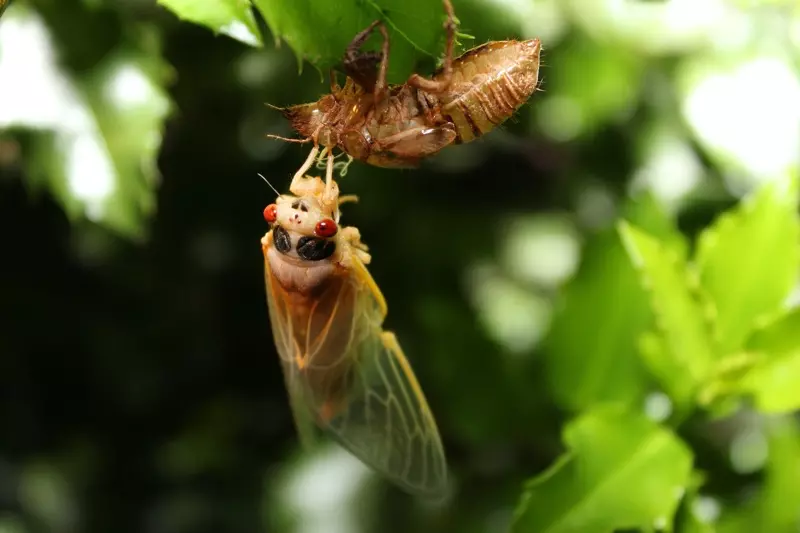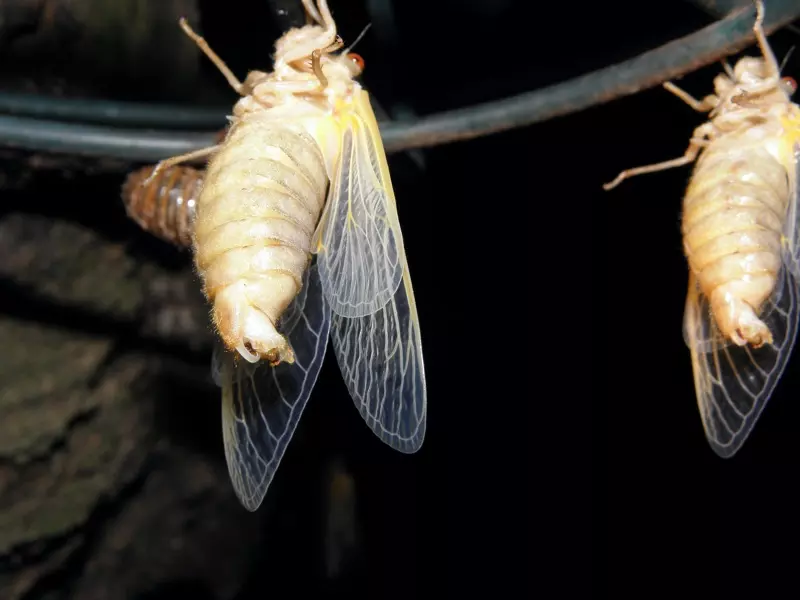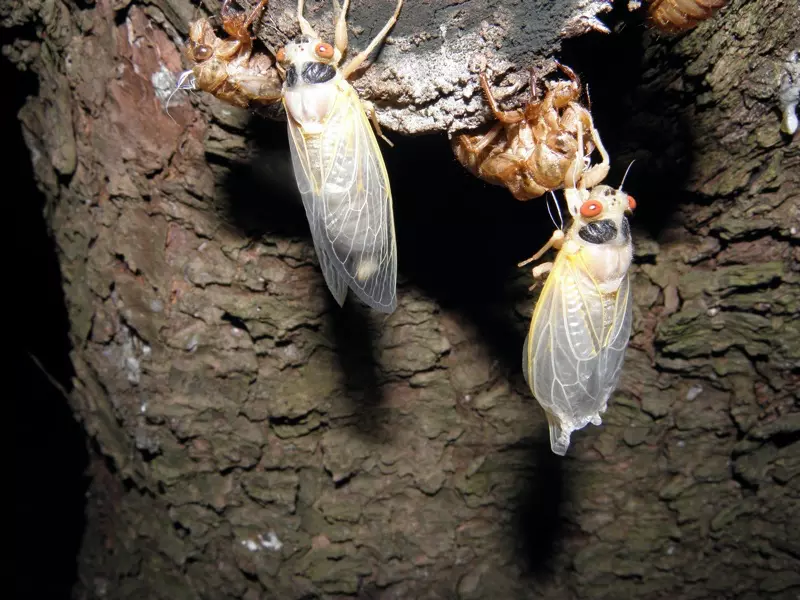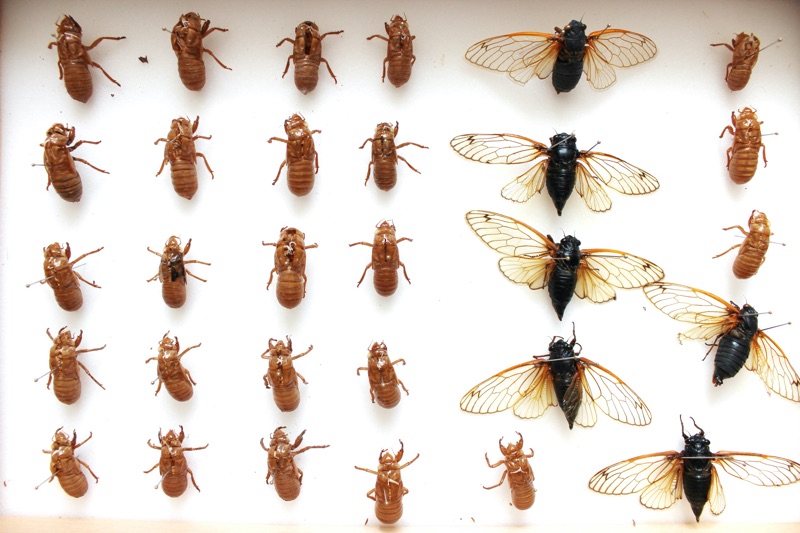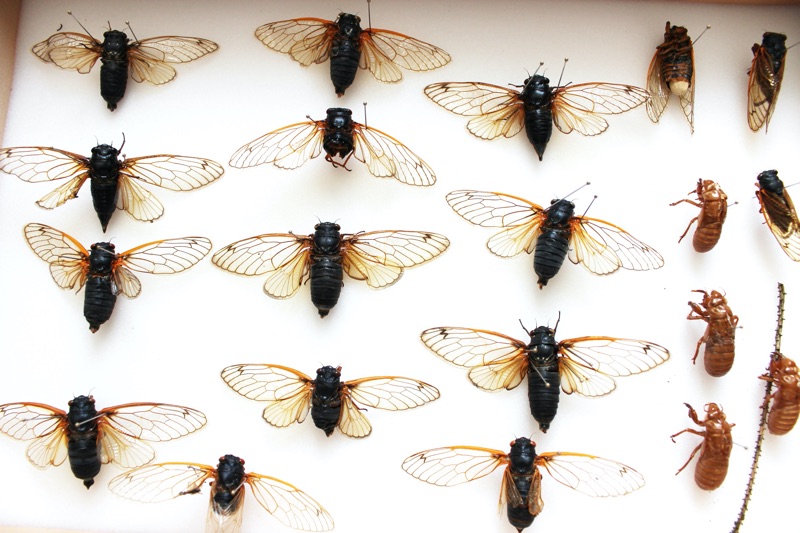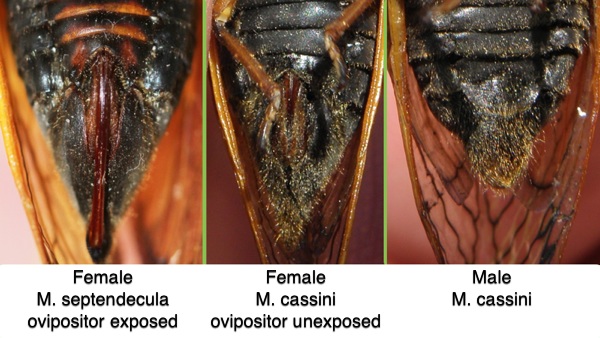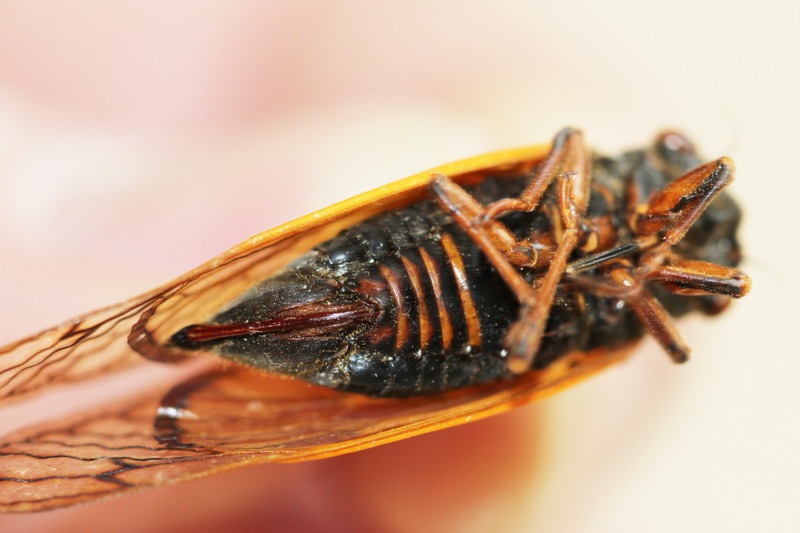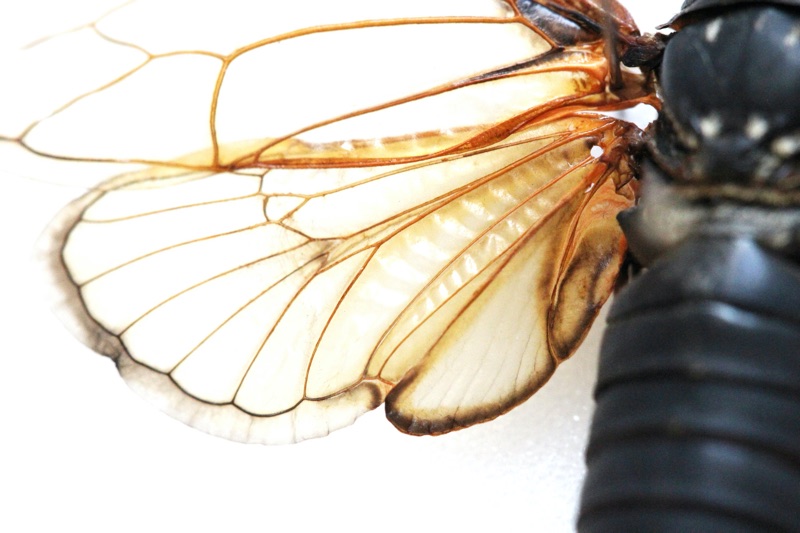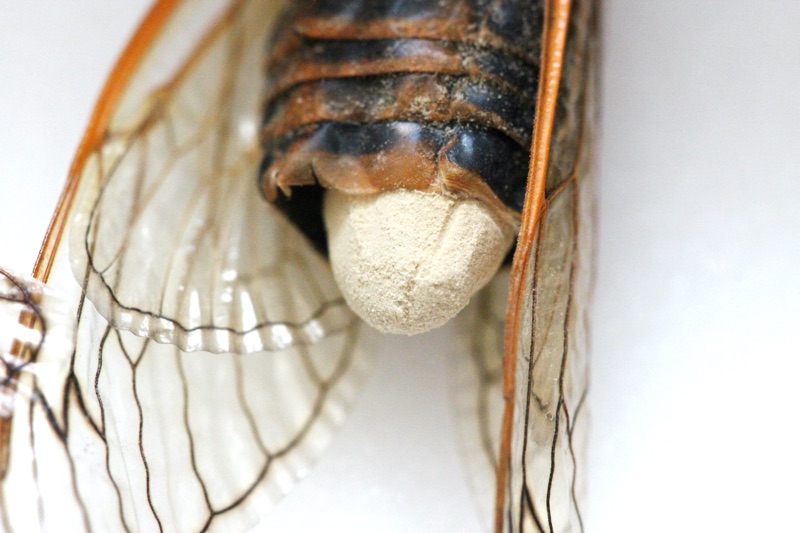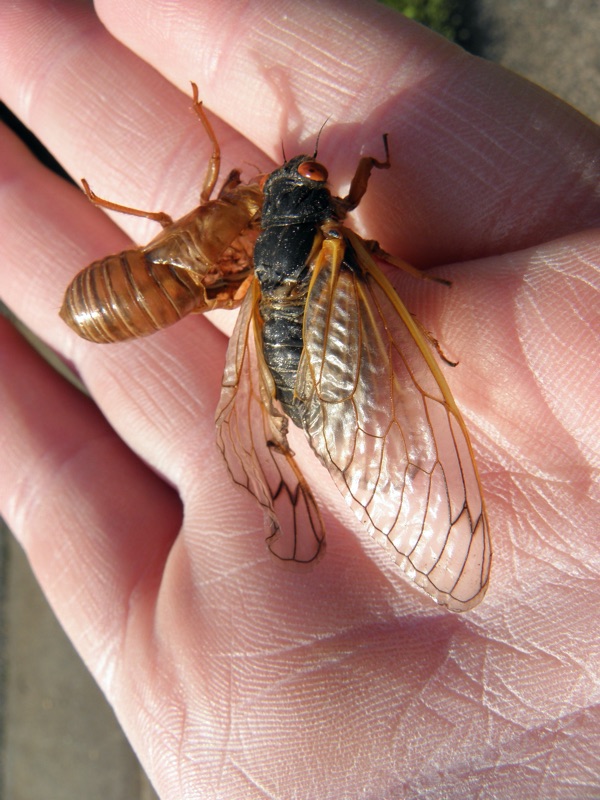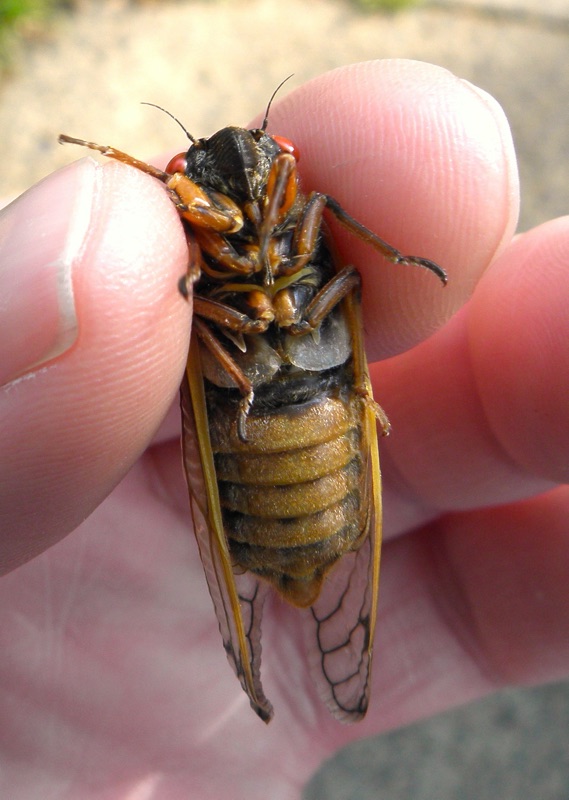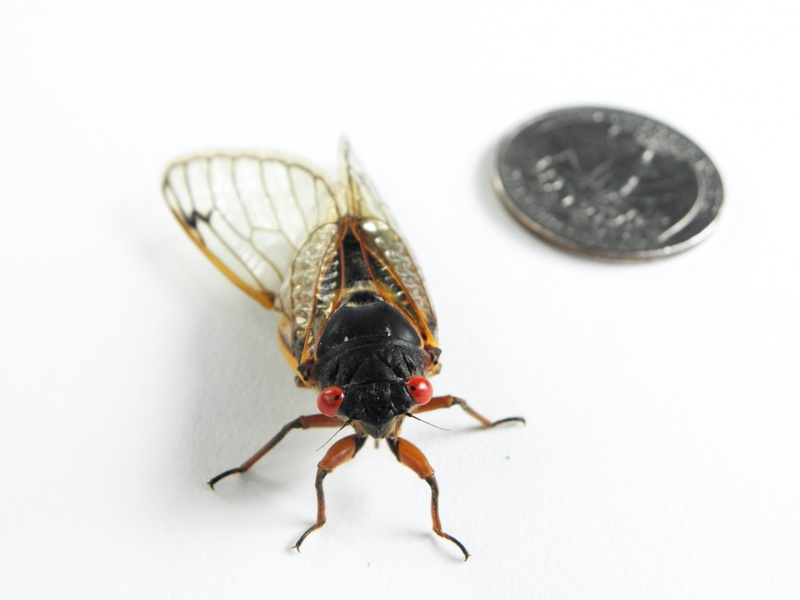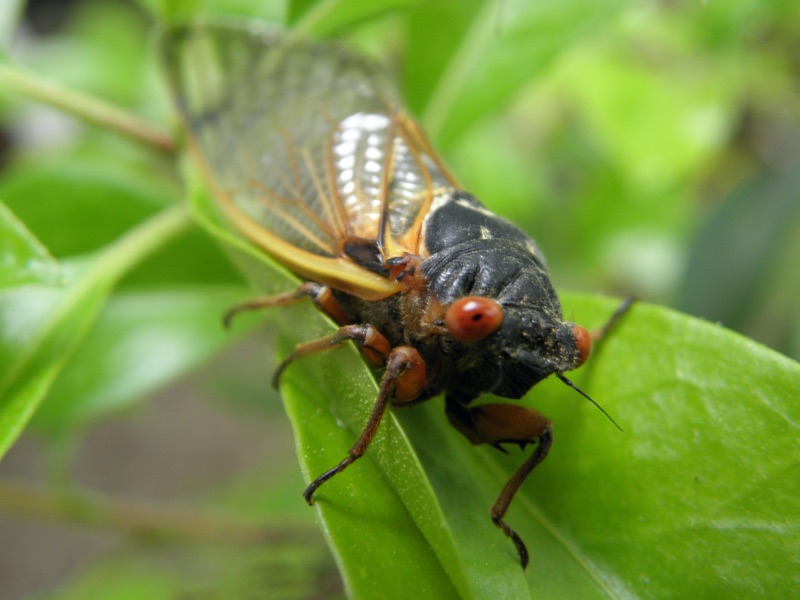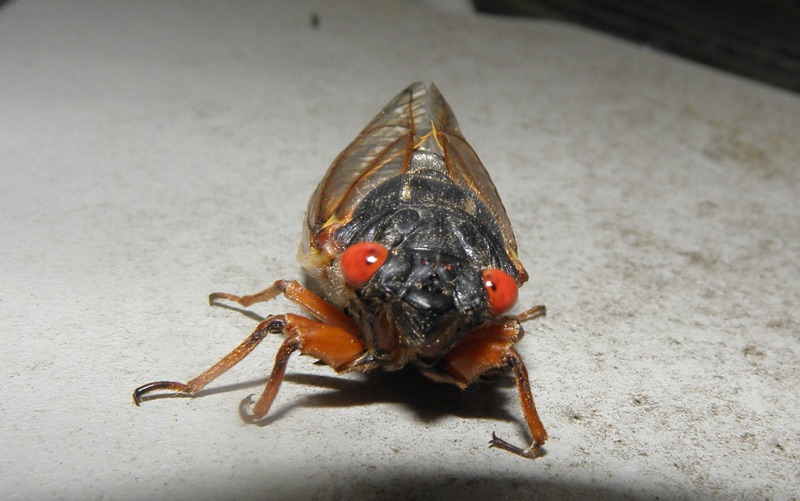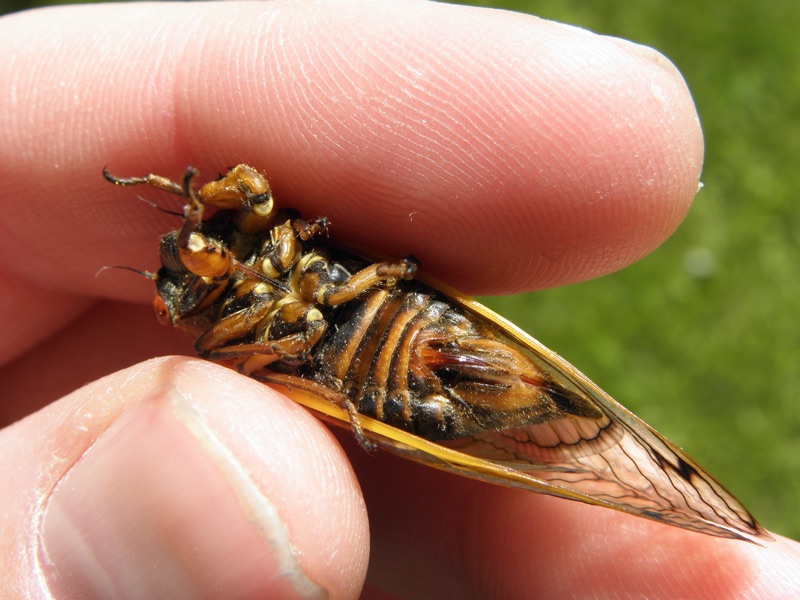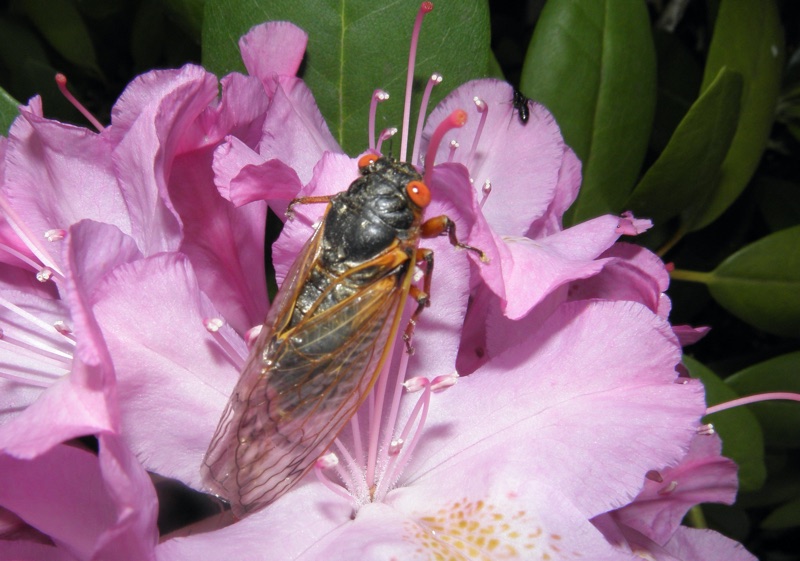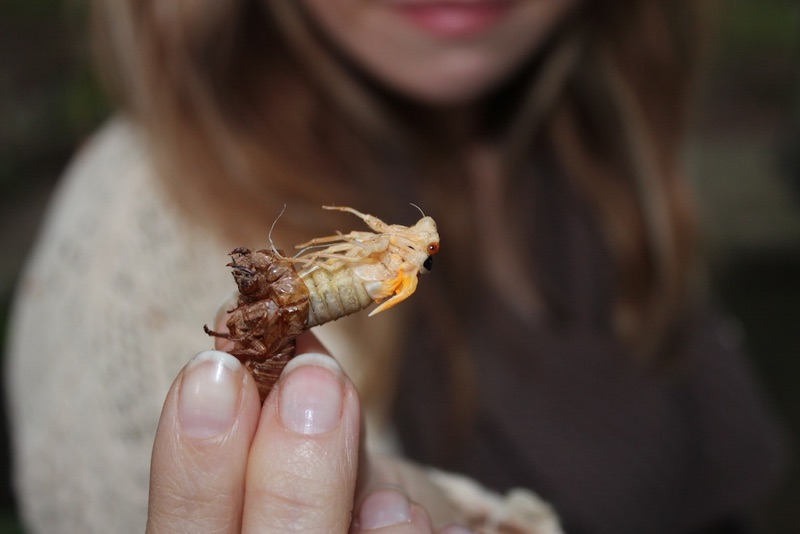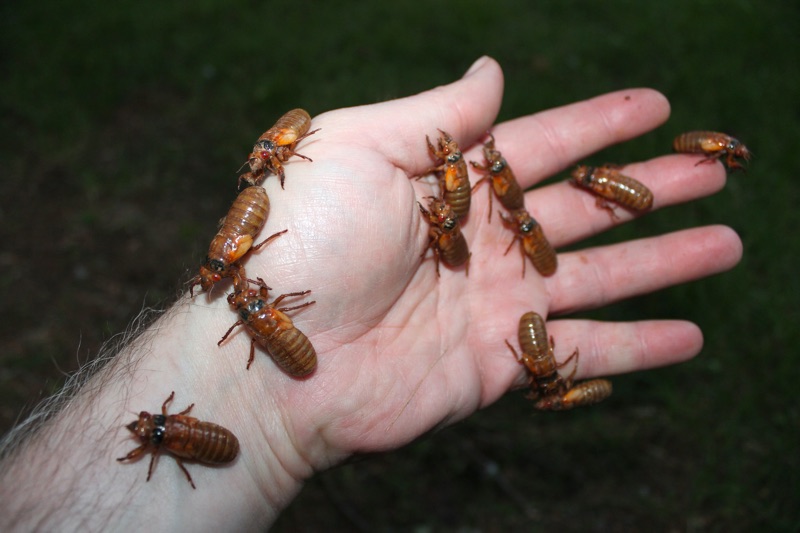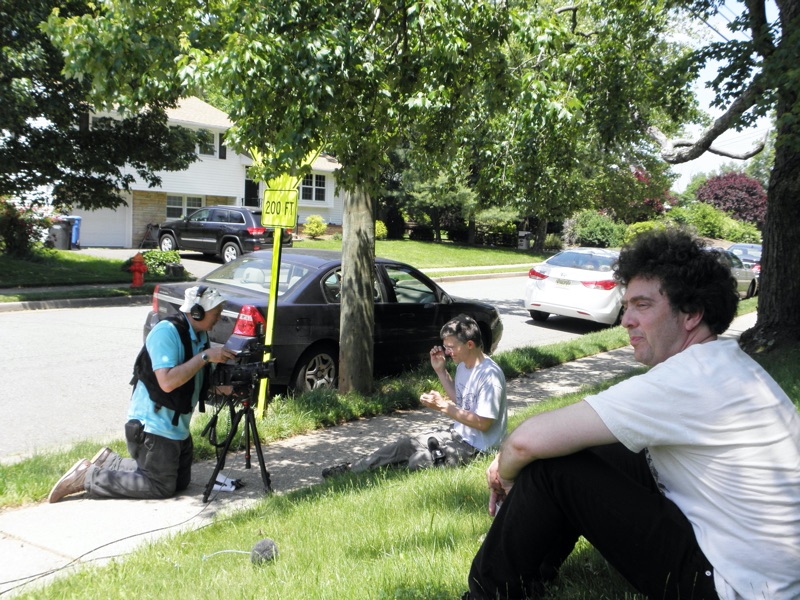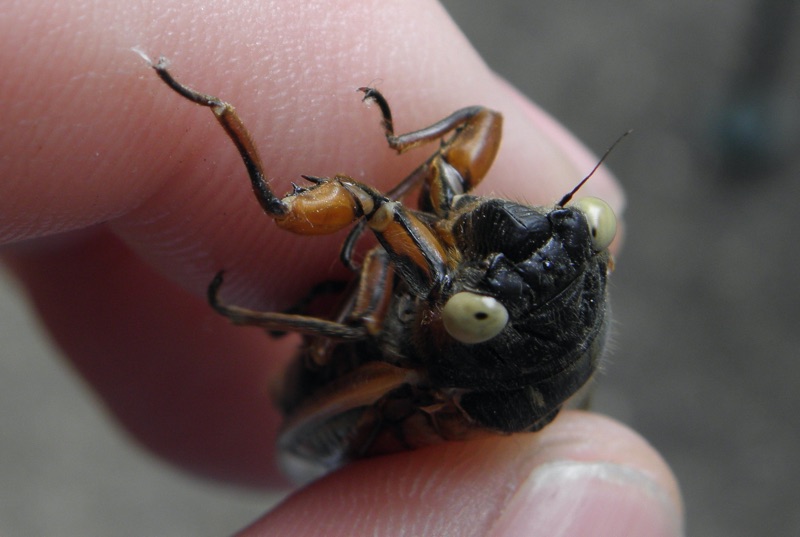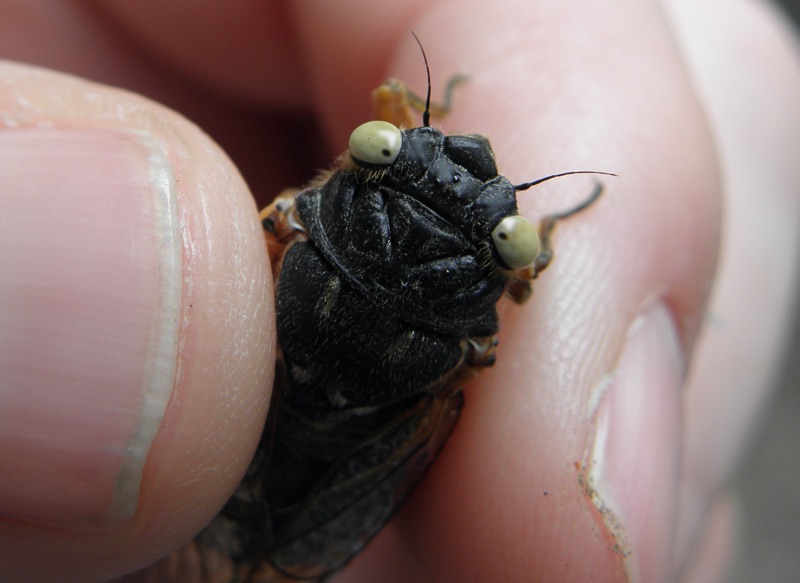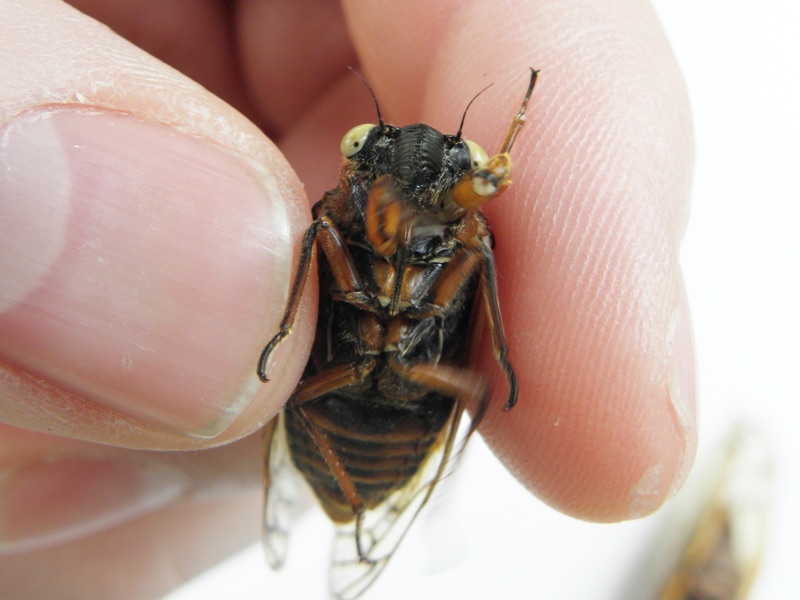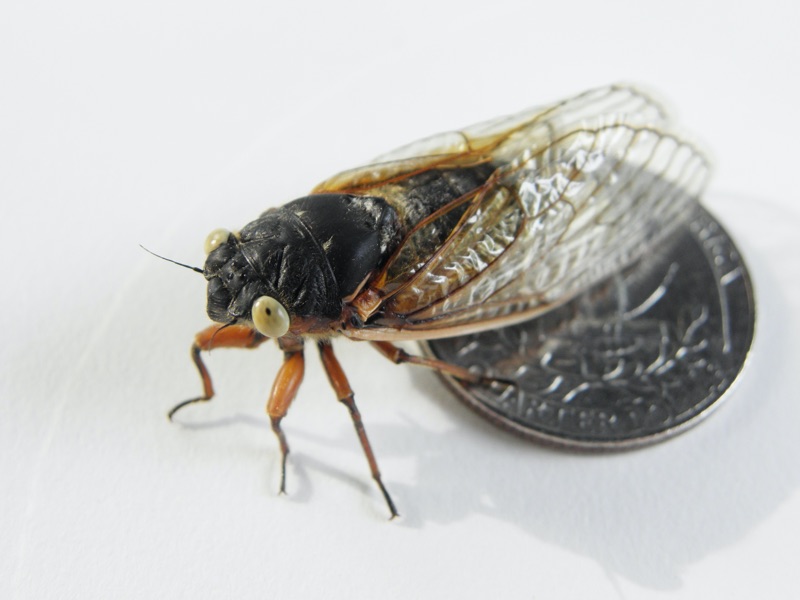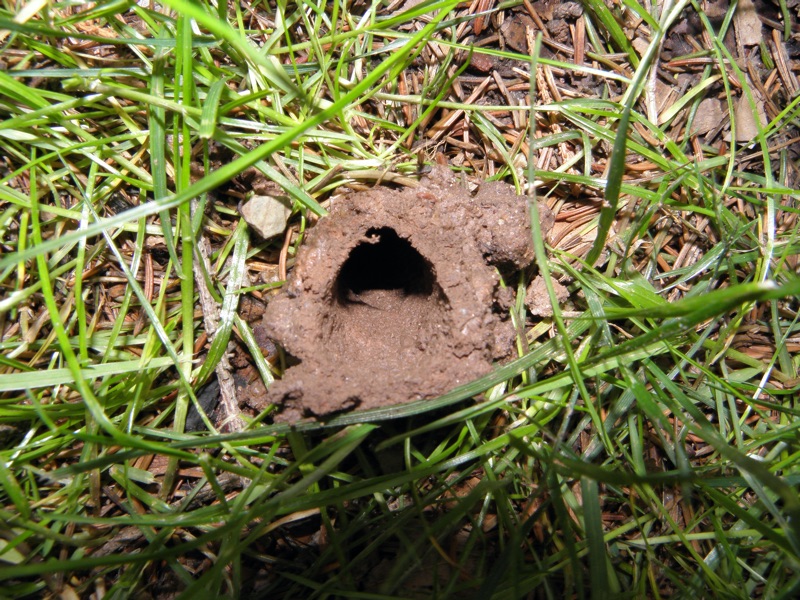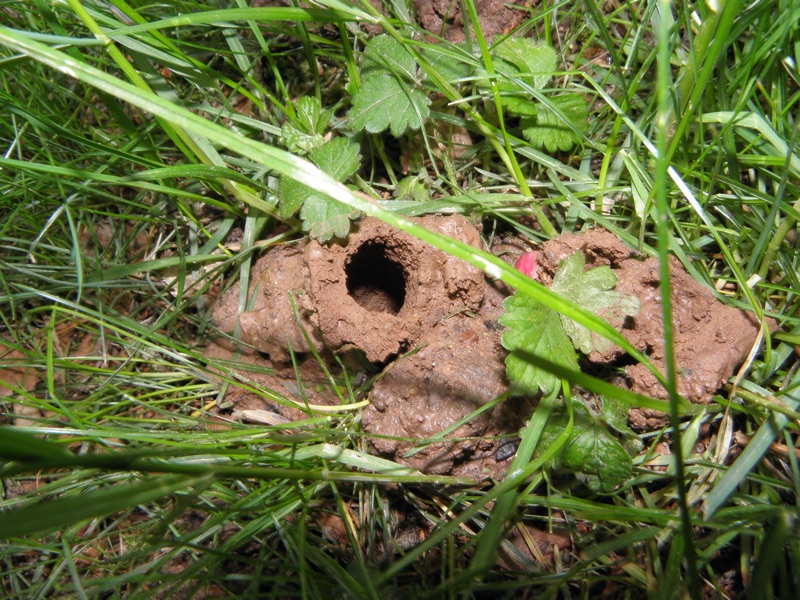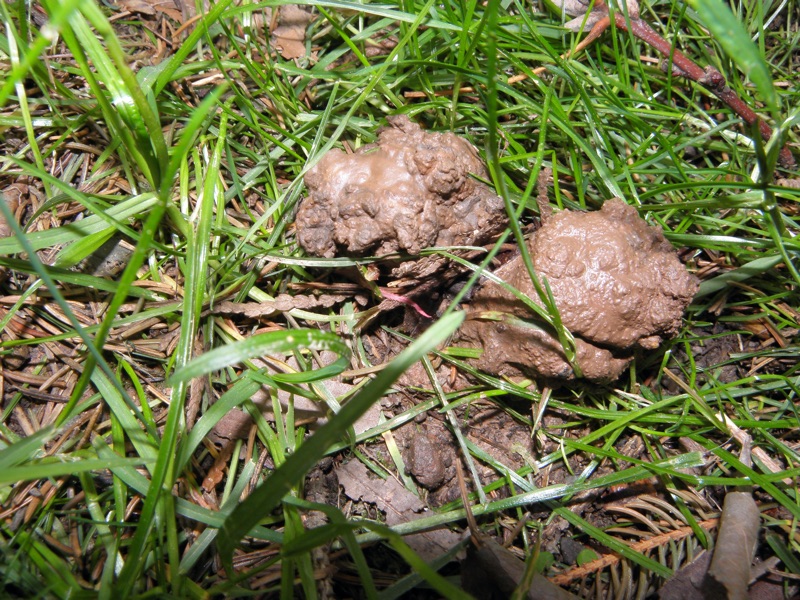Periodical cicada Brood XIII (13) emerged in the spring of 2024 in Iowa, Wisconsin, Illinois, Indiana, and Michigan (in one or two places). Brood XIII: rotten, but not forgotten. See you in 2041 (Yikes). Relive the memories: Gene Kritsky released a new book. See what people found iNaturalist: Flagging (Brown Leaves), Brood XIII, Massospora, and Blue and White eyes. Buy a shirt. Yes, Brood XIX also emerged in 2024, they did not overlap, but came close in the Springfield, Illinois area.

What, when, where, and why:
What:
Millions of these: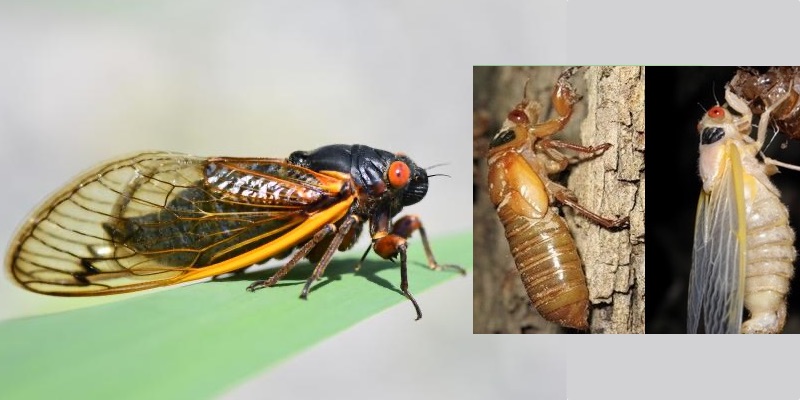
- Cicada insects with a 17-year life cycle.
- Some people call them “locusts” but they are cicadas.
- Which species: All three 17-year species, Magicicada septendecim, Magicicada cassini, and Magicicada septendecula. How to tell the difference between the species.
- NOT the green cicadas that arrive annually.
- The last time Brood XIII emerged was in 2007.
Videos from 2009:
When: Typically beginning in mid-May and ending in late June. These cicadas will begin to emerge approximately when the soil 8 inches beneath the ground reaches 64 degrees Fahrenheit. A nice, warm rain will often trigger an emergence.
Other tips: these cicadas will emerge after the trees have grown leaves, and, by my own observation, around the same time Iris flowers bloom.
Where:
Check out the iNaturalist live map.
- Illinois places: Belvidere, Brookfield, Channahon, Chicago, Des Plaines River Trail, Downers Grove, Egermann Woods County Forest Preserve, Elmhurst, Flossmoor, Geneva, Glen Ellyn, Highland Park, Hinsdale, Homewood, La Grange, Lagrange Woods, Lake Forest, Lansing, Lincolnshire, Lisle, Lombard, MacArthur Woods Forest Preserve, Marseilles, McHenry, McKinley Woods, Morton Arboretum, Naperville, Northbrook, Ogden, Ottawa, Palos Heights, River Forest, River Grove, Romeoville, Ryerson Woods, Schiller Park, Thornton, Vernon Hills, Villa Park, Weaton, Western Springs, Westmont, Wonder Lake, and more.
- Illinois counties: Bureau, Carroll, Cass, Cook, DuPage, Fulton, Grundy, Henderson, Henry, Jo Daviess, Kankakee, Lake, LaSalle, Livingston, Logan, Marshall, Mason, McHenry, McLean, Menard, Peoria, Putnam, Sangamon, Stark, Tazewell, Whiteside, Will, Winnebago, Woodford.
- Iowa places: Atalissa, Solon, and more.
- Iowa counties: Benton, Black Hawk, Bremer, Cedar, Dubuque, Henry, Iowa, Johnson, Jones, Linn, Louisa, Muscatine, Scott, Tama.
- Wisconsin locations: Aurora University, Big Foot Beach State Park, Lake Geneva, Moraine Nature Preserve, and more.
- Wisconsin counties: Crawford, Grant, Green. Rock, Walworth.
- Indiana locations: Crown Point, Portage, Purdue-North Central, Valparaiso, and more.
- Indiana counties: LaPorte, Porter, Lake.
- Michigan: According to Cicadas @ UCONN (formerly Magicicada.org), Magicicada have been found along the border of Michigan and Indiana.
- Michigan places: Niles!
More Location Tips:
- Cicadas @ UCONN has the most up-to-date maps
- Not sure? Ask someone in your community who lived there 17 years ago.
- A Tale of Two Broods: The 2024 Emergence of Periodical Cicada Broods XIII and XIX book by Dr. Gene Kritsky.
- The Cicada Safari app for iOS and Android to find and report cicadas.
Local Events
Lake County Forest Preserve in Illinois: 1) A cicada exhibit opening at the Dunn Museum in Libertyville, IL on April 27th. 2) Cicadas of Lake County on 5/2. 3) Celebrating Cicadas on 5/16. 4) On Sunday, June 9th, they plan to hold CicadaFest at Ryerson Woods. Insects, and of course, cicadas will be featured.
Why: Why do they stay underground for 17 years? The prevailing research suggests they have evolved a long lifecycle allowing them to avoid predators that would sync up with their lifecycle & emergence. Why are there so many?! Research suggests that their huge numbers allow them to overwhelm predators, so enough of them will live on to breed and perpetuate the brood.
More facts and fun:
- Use the correct image and the correct language when talking about these cicadas. Here are some images you can share.
- Use the Periodical Cicada Emergence Checklist for the Maximum Magicicada Experience.
- All cicada questions that are frequently asked.
- A video to help you tell the difference between the species.
- The 17 Most Interesting Periodical Cicada Facts.
- Cicada Mania Crossword Puzzle. It isn’t easy.
1907 Map from Marlatt, C.L.. 1907. The periodical cicada. Washington, D.C.: U.S. Dept. of Agriculture, Bureau of Entomology.
See a modern map or the Live Map from the Cicada Safari app.
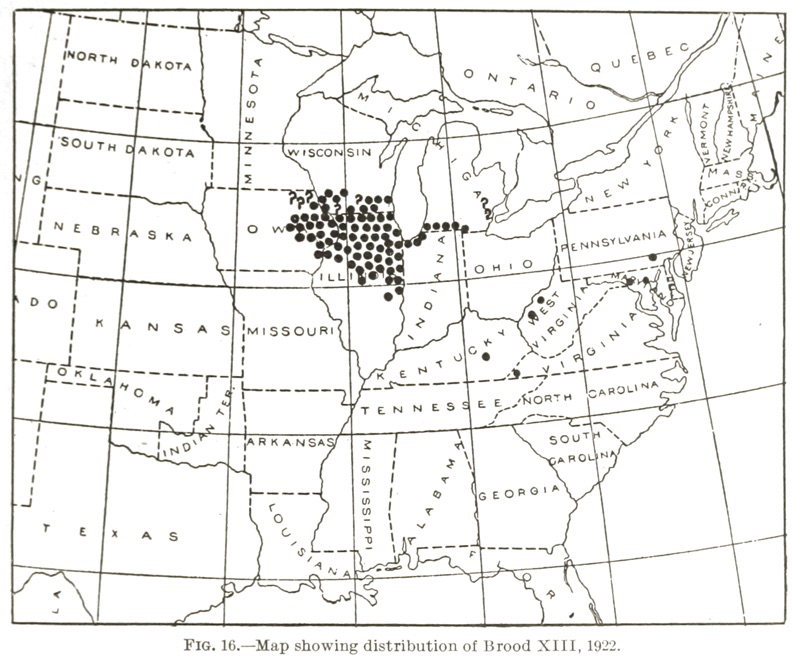
What was the emergence in 2007 like?
Get the retro 2007 Brood XIII shirt:
- Archive of Magicicada Discussions from 2007 – Brood XIII
- Brood XIII Magicicada emergence in 2007 at Ryerson Woods Forrest Preserve
- Emergence Update for 6/19/2007
- Brood XIII Update: 5/22/2007 — locations, photos, video and music
- Brood XIII News Update, 5/19/2007
- Brood XIII News Update, 5/17/2007
- Brood XIII News Update, 5/10/2007

